Boston University College of Engineering
Department of Biomedical Engineering


Boston University College of Engineering
Department of Biomedical Engineering


ABOVE: The Wong lab is a design-driven lab where we apply synthetic biology to engineer desired properties in mammalian cells, with application in understanding cellular design principles and developing cellular therapy.
By David Levin
Since its inception, Boston University’s biomedical engineering department has maintained a holistic and interdisciplinary approach to new research. Its commitment to working at multiple levels—from the scale of molecules to entire organs—has led to extraordinary scientific innovations and technological advancements in tissue engineering, synthetic biology, neural engineering, and other groundbreaking areas.
Part of this success is due to the dynamic environment in which the department operates: faculty collaborate freely across multiple fields, and are encouraged to work on thorny problems that other researchers might shy away from tackling.
“I would say audaciousness is what defines our department,” says Chair John White. “It’s not just about making incremental progress. We choose faculty that want to work on really big, difficult problems that can shape healthcare 10-20 years in the future. They’re scientific risk takers, and we provide an environment where it’s safe to take those risks.”
This core philosophy is highlighted by current work taking place within the department. Scientists and engineers under its auspices are conducting research in wide-ranging yet deeply impactful areas: together, they’re designing new synthetic RNA that can detect viruses; building ways to diagnose neurological diseases with more specificity than ever before; and growing living heart tissue patches that could eventually save the lives of thousands of patients worldwide.
In all these cases, researchers are mounting a tireless effort to improve healthcare, making it safer, cheaper, more effective, and broadly deployable. “As biomedical engineers, it’s our calling in the world to improve human health,” says White. “That’s what drives every single person here.”
At right, discover the work of three visionary researchers within the department: Professor of Biomedical Engineering Chris Chen; Associate Professor Anna Devor; and Assistant Professor Alex Green—and learn how their audacious ideas might change the face of medicine.


Chris Chen:
The heart is arguably the hardest-working tissue in in the human body: it’s one of the first organs to form in the womb, and must keep ticking, without end, for the rest of our lives. Astoundingly, though, the cells within it can’t easily divide and reproduce. If damage occurs to any of them, that’s it—the injured tissue won’t be able to repair itself, leaving the remaining parts of the organ about to limp along as best as they can.
Professor Chris Chen wants to improve that outcome. He’s working to create new heart tissue in the lab, and is using a patient’s own skin or blood cells as a starting point. Through a complex biological process, Chen can reprogram those cells, turning them into pluripotent stem cells—a sort of universal cell that can become almost any kind of tissue in the body. From there, he anchors them onto a specialized substrate that cues them to become cardiomyocytes, the pulsating muscle cells that keep the heart beating. Because this newly-formed heart tissue originated from parts of the patient’s own body, there’s almost no chance that it would trigger an immune response, says Chen.
At the moment, Chen and his team are still develoing and testing the concept in the lab. While these heart patches aren’t yet ready to be used in humans, he notes, they may be incredibly valuable tools for developing new drug treatments. “The human heart can react very differently to a drug than animal heart cells,” he says.
“It’s very possible to miss a cardiotoxicity in the course of testing potential drugs. If you do, you’ve wasted a huge amount of resources developing a compound that turns out to be toxic to human cardiac tissue.” Lab-made human heart tissue, however, might help researchers catch those issues early, making drug development faster and more accurate—advances that could offer new hope for patients with serious heart disease.
The human heart can react very differently to a drug than animal heart cells. It’s very possible to miss a cardiotoxicity in the course of testing potential drugs.”
- Professor Chris Chen


Early diagnosis of cognitive disorders, including Alzheimer’s disease and dementia, is a challenge. Often, these disorders involve dysfunction of specific neuronal circuits controlling our alertness, arousal, and cognitive performance, such as our ability to focus or pay attention. While currently there’s no way to directly examine if any one specific neuronal circuit has been compromised, having such a tool would impact clinicians and basic scientists alike. For clinicians, it would allow stratifying patients based on the underlying neurobiological mechanisms. For basic scientists, knowing the mechanism of disease guides the development of targeted drugs and other interventions.
A multidisciplinary team of researchers led by Associate Professor Anna Devor is working on ways to squeeze more detailed information out of an existing noninvasive brain imaging technique called fMRI. fMRI shows changes in cerebral blood flow, which are driven by neuronal activity causing dilation and constriction of brain arteries.
The team USArhythms incudes researchers across two continents and four academic institutions. By performing parallel experiments in humans and mice and combining experimentation with computational modeling, they are identifying unique fMRI patterns that correspond to activity in specific brain-wide neuronal circuits. This is a first step towards a definitive way of telling whether those circuits are working correctly.
“If you may’ve broken a bone, your doctor doesn’t rely on your verbal report. They take an X-ray to see if there’s a fracture. At the moment, that kind of specific imaging capability is missing for cognitive disorders,” she says. “In the case of Alzheimer’s, by the time memory loss sets in, your brain has already experienced massive damage. As with any other disease, if we can find a way to catch it early, more options for treatment may be available.”
As with any other disease, if we can find a way to catch it early, more options for treatment may be available.”
- Associate Professor Anna Devor


With a global Covid-19 pandemic still circulating and a Monkeypox outbreak gathering steam, detecting viruses quickly and efficiently is proving to be critical for public health. Right now, the only way to do that definitively is by testing whether viral DNA is present in a sample, a process that can take up to a day to complete using expensive equipment in centralized laboratories.
New paper-based tests that are being developed at BU could offer a cheaper and more nimble solution. The tests, which were created by Assistant Professor Alex Green, rely on folded molecules of RNA that they make in the lab. Green and his team the freeze-dry the DNA template to make the RNA along with other key enzymes needed to read genetic code, then apply the molecules onto a paper strip. When a sample of saliva or other liquid is applied, the mixture activates and goes to work searching for a virus.
“The RNA we make is basically acting as a molecular sensor,” says Green. “If it finds the right sequence from a virus and binds to it, the RNA molecule unfurls and creates an enzyme.” That enzyme in turn breaks down chemicals in a yellow dot on the test strip, changing it into a bright purple that indicates a positive result.
Unlike existing tests, these paper versions cost just a few dollars, and can be customized to search for any gene within a few days. If kept dry, they could last for months at a time, which would help emergency responders respond to future outbreaks before they become widespread.
“
The RNA we make is basically acting as a molecular sensor.”
- Assistant Professor Alex Green
In fiscal year 2022 the BME Department faculty search added four new faculty that will start in the next year. Assistant Professors Michelle Teplensky and Adriana Tomic will start September 1, 2022 and Assistant Professors Brian DePasquale and Liangliang Hao will start January 1, 2023. At the end of FY 2022, the BME faculty numbered 40, making the department one of the largest in the country in terms of primary faculty.
The BME PhD Program awarded 24 degrees in AY21-22, bringing our total PhD degrees awarded to 396 since the program began in 1991. 41 MS degrees were awarded, as well as 19 MEng degrees. Our graduate programs enrolled 255 students (169 PhD students; 4 MD/PhD; 42 MS; 26 MEng).
Graduate student recruitment: In the fall 2022 we matriculated 99 new graduate students (40 PhD, 24 MS, 20 MEng and 15 LEAP). Our applicant pool continues to be competitive with other top tier Biomedical Engineering Programs. In the 2021 – 2022 recruiting season, we received 1,087 applications (PhD, MS and MEng).
The BME Undergraduate Program awarded 126 Bachelor of Science degrees and enrolled 588 students in AY 21-22.
In FY 2022 the BME faculty was awarded $51,532,933 in extramural funds available for expenditure during the year. They expended $40,122,863. This translates to about $1.56M per research active faculty member in new funding and $1.21M per research active faculty member in expenditures. The faculty submitted 135 research proposals for $169M.
Our faculty is comprised of world renowned scientists and engineers who work across every scale of biology and in a wide spectrum of bioengineering subspecialties. Their research is driven by advancing fundamental understanding of biology and physiology in health and disease and then translating these principles to new technologies that impact the human condition and the practice of medicine. The research laboratories of the research active faculty members are listed on our web site (http://www.bu.edu/bme/research/labs/) and they also participate in 8 interdisciplinary research centers that are directed by BME faculty: Bioengineering Technology and Entrepreneurship Center (BTEC), Biological Design Center (BDC), Biomolecular Engineering Research Center (BMERC), Center on Forced Displacement (CDF), NSF Engineering Research Center in Cellular Metamaterials (CELL-MET), Nanotechnology Innovation Center (BUnano), Neurophotonics Center (NPC), and Precision Diagnostics Center (PDC).


“ As biomedical engineers, it’s our calling in the world to improve human health. That’s what drives every single person here.“
- John A. White, BME Department Chair
40 Primary Faculty 169 PhD Students
588 Undergraduates
89 Courses Taught
$52 MILLION Research Funding

CHAIR
Dr. John A. White
VICE CHAIR
Dr. Muhammad Zaman
ASSOCIATE CHAIR FOR GRADUATE PROGRAM
Dr. James Galagan
ASSOCIATE CHAIR FOR UNDERGRADUATE PROGRAM
Dr. Irving Bigio
DIRECTOR OF PROFESSIONAL MASTERS PROGRAMS
Dr. Mario Cabodi
DIRECTOR OF PHD PROGRAM ADMISSIONS
Dr. Darren Roblyer
DIRECTOR FOR MASTERS PROGRAM ADMISSIONS
Dr. Kamal Sen
DIRECTOR
Matthew Barber
ASSOCIATE DIRECTOR
Christen Bailey
ASSISTANT DIRECTOR, FINANCE & ADMINISTRATION
Crystal Kelly
ADMINISTRATIVE
Stefanie Salguero, Administrative Assistant to the Chair
Stephanie Johnson, Senior Program Coordinator
Lyn Markey, Design and Communications
Dr. Joshua Finkelstein, Executive Director, BDC
Lena Landaverde, Assistant Director PDC
Inna Gerzon, Professional Masters Programs Administrator
John Benducci, Undergraduate Program Administrator
Kyle Best, Financial Administrator
Katie Eno, Financial Manager
Irene Orzechowski, Financial Manager
Laura Prusaitis, Financial Manager
Tara Sorrentino, Financial Manager

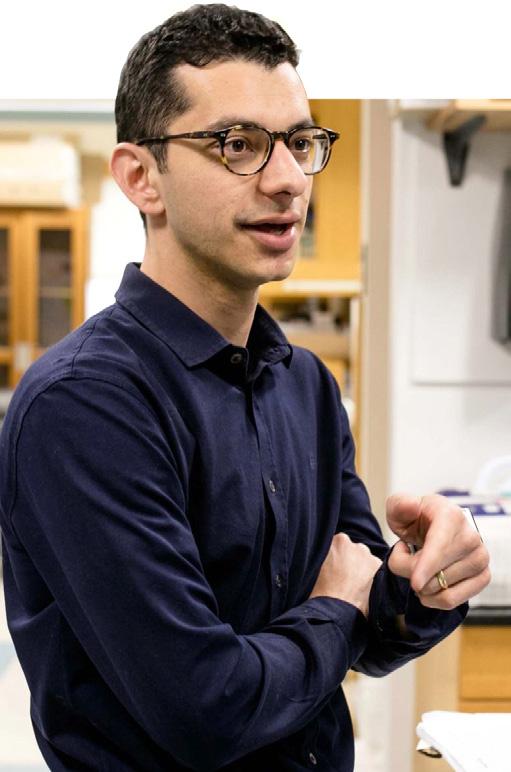
Associate Professor Ahmad “Mo” Khalil was recognized with 3 major awards: the Schmidt Science Polymaths Award, the Future Fund Grant, and the WM Keck Foundation Medical Research Award. Based on his lab’s expertise in synthetic biology and solid track record of collaboration, the awards will empower Khalil to expand his lab’s science into new therapeutic innovations, uncovering the design principles of natural cellular circuits, and how they carry out specific biological functions.
Assistant Professor Laura Lewis was included in special issue of Science devoted to the essential physiological process of sleep. Her article discusses how sleep maintains the health of the brain through interconnected systems of neuronal activity and fluid flow. Lewis and her lab team focus on a common brain imaging technique— functional magnetic resonance imaging (fMRI)—to innovate new technologies for monitoring brain activity during sleep.
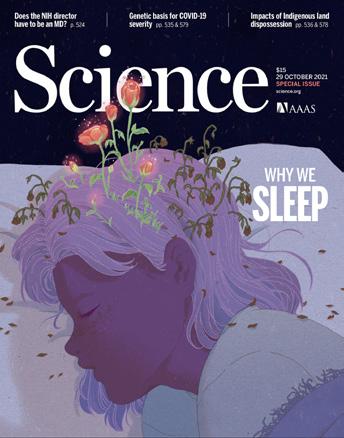

A new $2.3 million outreach program, led by BU Professor Douglas Densmore and funded by the Department of Defense, will introduce hundreds of underserved high school students to STEM careers and the emerging field of synthetic biology.

Assistant Prof. Hadi Nia was awarded a Beckman Young Investigator Award. The Beckman Foundation’s mission is to support the most promising young faculty members in the early stages of their academic careers in the chemical and life sciences, particularly to foster the invention of new research methods, instruments, and materials.
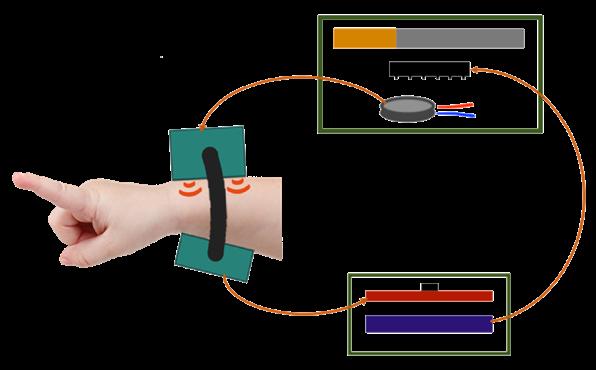
Two recent BME grads, Meghan Griffin and Leen Arnaout, garnered a top award in the 2021 Biomedical Engineers Society (BMES) Design Competition. Their novel device, a bracelet that helps regulate breathing in premature infants, would treat Apnea of Prematurity, which affects more than 85% of these infants. The duo are working with BU’s Office of Technology Development to eventually bring the device to market.
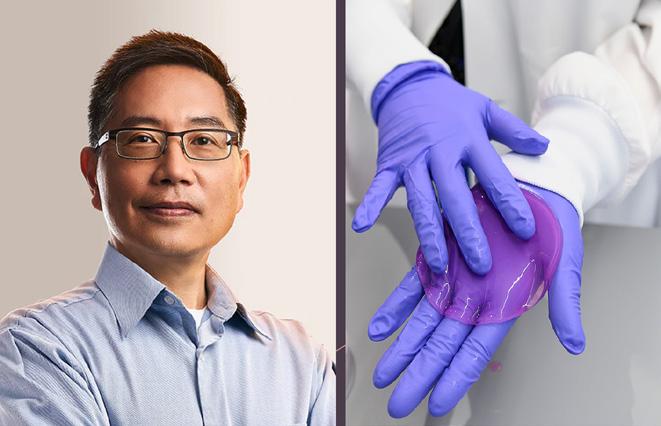
After developing a breakthrough method of regenerating liver tissue, Prof. Chris Chen and colleagues have launched a startup, Satellite Bio. The company says its novel technology, which it calls “tissue therapeutics,” would allow scientists to program cells and aggregate them “into novel, implantable therapies, called ‘satellites,’ which can be introduced to patients to repair, restore, or even replace dysfunctional or diseased tissue or organs”.

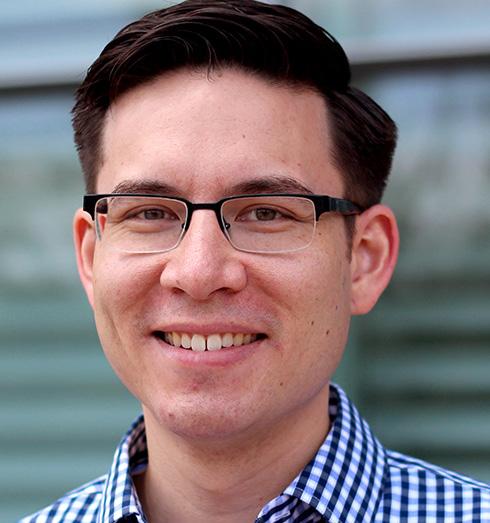
Assistant Professor Alexander Green has received a 2021 Scialog Collaborative Innovation Award from the Research Corporation for Scientific Advancement to develop a new type of sensor capable of detecting heretofore hidden signals within a cell, with potential applications both diagnostic and therapeutic.signals within a cell, with potential applications both diagnostic and therapeutic.
BME Profs. Mark Grinstaff, Wilson Wong and MGH’s Yolonda Colson were selected by the National Cancer Institute and NBIB for an award supporting trans-disciplinary teams employing collaborative approaches to engineer biology for cancer applications. The team will study precise tumor targeting with logic CAR circuits.


Joshua Glaser, PhD Columbia University
Interpretable Machine Learning for Systems Neuroscience
Longzhi Tan, PhD Stanford University
Probing the single-cell 3D genome architectural basis of neurodevelopment and aging in vivo
Arina Korneva, PhD Johns Hopkins University
Biomechanics of the Optic Nerve Head in Glaucoma
Liangliang Hao, PhD MIT
Visualizing the unseen: Enabling precision oncology through microenvironmenttriggered diagnostics and therapeutics
Changyang Linghu, PhD MIT
Multiplexed and Scalable Readout of Cellular Activities Enabled by Synthetic Protein Self-assemblies
Kayhan Batmanghelich, PhD University of Pittsburgh
Helping ML Models with Medical Insights for Learning, Inference, and Model Explanation
Michelle Teplensky, PhD Northwestern University Enhancing Immunity through Rational Design of Vaccine Structure
Jesse Marshall, PhD Harvard University Measuring the body to understand the mind
Hayden Metsky, PhD Broad Institute Designing genomics-based tools that surveil and combat pathogens at scale
Santiago Correa, PhD Stanford University Self-Assembling Nanotechnologies
Ritchie Chen, PhD Stanford University Biohybrid Tools to Study Brain and Body Circuits
Shiva Farashahi, PhD Flatiron Istitute Exploring Neural Mechanisms of Adaptive Behavior
Holly Wiberg, PhD MIT
Data-Driven Healthcare via Constraint Learning and Analytics
Brian DePasquale, PhD Princeton Neuroscience Institute An integrated statistical and mechanistic approach to modeling dynamic neural computation
Mariano Gabitto, PhD Allen Institute for Brain Science Learning Structure in Single-cell Chromatin Data During Cortical Development
Amirali Aghazadeh, PhD University of California, Berkeley Trusted AI for Molecular Inference: the Role of Sparsity
Xiaojun Cheng, PhD Boston University
Light Scattering in Dynamic Brain Tissue: Theoretical Exploration of Methods to Improve the Performance of Optical Imaging Techniques
Kathleen E. Cullen, PhD Johns Hopkins University
Predictive Coding of Natural Self-Motion: Implications for Perception & Action
Maribel Vazquez PhD Rutgers University
Microfluidic Modeling of the Regenerative Behaviors of Retinal Stem Cells
James A. Van Deventer, PhD Tufts University
Genetic Code Manipulation in Yeast
Ashutosh Agarwal, PhD University of Miami Human Organoids on a Chip

(sampling)
Ji-Xin Cheng, John White et al - LIGHT: SCIENCE AND APPLICATIONS
Non-genetic photoacoustic stimulation of single neurons by a tapered fiber optoacoustic emitter
Hadi Nia et al - NATURE BIOMEDICAL ENGINEERING
Solid stress impairs lymphocyte infiltration into lymph-node metastases
Laura Lewis - SCIENCE
The interconnected causes and consequences of sleep in the brain
Laura Lewis - PROGRESS IN NEUROBIOLOGY
How pushing the spatiotemporal resolution of fMRI can advance neuroscience
Anna Devor - CURRENT OPINION IN BIOMEDICAL ENGINEERING
A suite of neurophotonic tools to underpin the contribution of internal brain states in fMRI
Anderson Chen et al - NATURE METHODS
An adaptive optics module for deep tissue multiphoton imaging in vivo
Muhammad Zaman - PROJECT SYNDICATE
Learning from COVID to Fight Drug-Resistant Disease
Oded Ghitza - eNEURO
Acoustically Driven Cortical Delta Oscillations Underpin Prosodic Chunking
Tim O’Shea et al. - NATURE
Divergent transcriptional regulation of astrocyte reactivity across disorders
Ahmad (Mo) Khalil - SCIENCE
One cell, many fates A synthetic gene circuit enables programming of many stable states in mammalian cells
Mary Dunlop - SCIENCE
Anticipating Antibiotic Resistance
Alex Green - NATURE BIOMEDICAL ENGINEERING
Multi-arm RNA junctions encoding molecular logic unconstrained by input sequence for versatile cell-free diagnostics
Mark Grinstaff et al. - NATURE - ONCOGENE
H3K9me3 represses G6PD expression to suppress the pentose phosphate pathway and ROS production to promote human mesothelioma growth
Ahmad (Mo) Khalil, et al. - CELL
Modular design of synthetic receptors for programmed gene regulation in cell therapies
Chris Chen et al. - SCIENCES ADVANCES
Engineering a living cardiac pump on a chip using high-precision fabrication
Joe Tien - CELLULAR AND MOLECULAR BIOENGINEERING
Adipose stroma accelerates the invasion and escape of human breast cancer cells from an engineered microtumor.



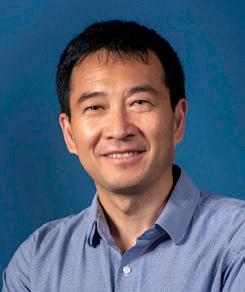



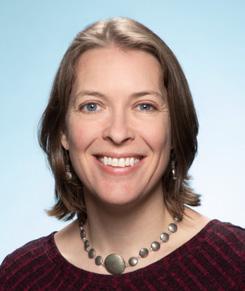
IRVING J. BIGIO
Professor, Biomedical Engineering; Electrical and Computer Engineering; Physics; Medicine PhD, Physics, University of Michigan
Medical applications of optics, lasers and spectroscopy; biomedical optics and biophotonics; biomolecular dynamics; applied spectroscopy, especially to biomedical problems; nonlinear optics; quantum electronics and laser physics.
DAVID BOAS
Professor, Biomedical Engineering; Electrical and Computer Engineering; Director, Neurophotonics Center PhD, Physics, University of Pennsylvania
Neurophotonics; biomedical optics; functional near infrared spectroscopy; microscopy methods; oxygen delivery and consumption; neuro-vascular coupling; physiological modeling.
CHRISTOPHER S. CHEN
Professor, Biomedical Engineering; Director, Biological Design Center MD, Harvard University; PhD, Medical Engineering, MIT
My laboratory seeks to understand how cells interact with their environment, and to use this knowledge to control cell function. In particular, we are studying the cooperation between adhesive, mechanical and biochemical signaling in the regulation of angiogenesis and stem cell biology.
JI-XIN CHENG
Professor, Biomedical Engineering; Electrical and Computer Engineering; Chemistry; Physics; Moustakas Chair Professor in Photonics and Optoelectronics
PhD, Chemical Physics, University of Science and Technology of China
Molecular spectroscopic imaging technologies; label-free microscopy; medical photonics; neurophotonics; cancer metabolism; photonics for infectious diseases.
BRIANNE CONNIZZO
Assistant Professor, Biomedical Engineering
PhD, Bioengineering, University of Pennsylvania
Aging, orthopaedic and soft tissues, mechanobiology, multiscale biomechanics, extracellular matrix assembly and remodeling.
EDWARD DAMIANO
Professor, Biomedical Engineering PhD, Applied Mechanics, RPI
Integrated cellular and extracellular biomechanics; biofluid dynamics; microhemofluidics; microcirculation; vestibular biomechanics; non-Newtonian rheology; closed-loop bloodglucose regulation.
CHARLES DELISI
Metcalf Professor of Science and Engineering; Dean Emeritus, College of Engineering PhD, Physics, New York University
Developing and applying computational/mathematical methods, and high throughput experimental methods for inferring the structure and function of protein networks.
ALLISON M. DENNIS
Assistant Professor, Biomedical Engineering
PhD, Bioengineering, Georgia Institute of Technology
Nanobiotechnology; fluorescent biosensing; fluorescence resonance energy transfer (FRET); quantum dot chemistry; fluorescence microscopy; single molecule sensing/imaging.



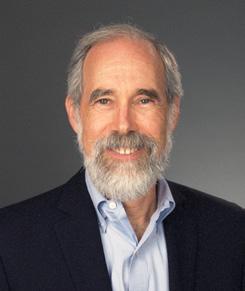


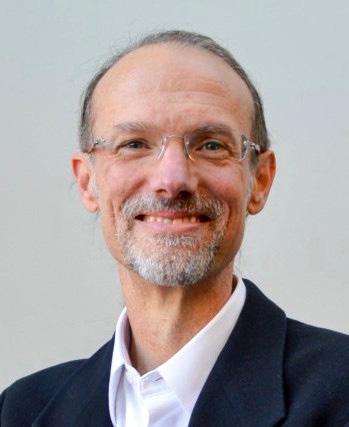

ANNA DEVOR
Associate Professor, Biomedical Engineering
PhD, Hebrew University of Jerusalem, Israel
Cellular and systems-level neuroscience, microscopy, physiological underpinning of noninvasive imaging.
MARY DUNLOP
Associate Professor, Biomedical Engineering
PhD, Mechanical Engineering, California Institute of Technology
Understanding how microorganisms use feedback to respond to changes in their environment, studying naturally occurring examples of feedback to understand their implications for survival in changing conditions, and engineering novel, synthetic feedback control systems.
MICHAEL ECONOMO
Assistant Professor, Biomedical Engineering
PhD, Biomedical Engineering, Boston University
Systems neuroscience, motor control, long-range neural circuits, computational neuroscience, neurotechnology.
SOLOMON EISENBERG
Professor, Biomedical Engineering; Electrical and Computer Engineering; Senior Associate Dean for Academic Programs, College of Engineering
ScD, Electrical Engineering, MIT
Electrically mediated phenomena in tissues and biopolymers; cartilage biomechanics; computational modeling of electric field distributions in the human thorax and heart during defibrillation; transcranial magnetic stimulation.
JAMES GALAGAN
Professor, Biomedical Engineering; Microbiology, BUSM
PhD, Computational Neuroscience, MIT
Biosensor Development, Computational Biology, Systems Biology, Genomics.
ALEXANDER GREEN
Assistant Professor, Biomedical Engineering
PhD, Materials Science and Engineering, Northwestern University
Synthetic biology, nucleic acid nanotechnology, low-cost diagnostics, nanomaterials.
MARK GRINSTAFF
Professor, Biomedical Engineering; Chemistry; Director, Nanotechnology Innovation Center
PhD, Chemistry, University of Illinois Urbana-Champaign
Biomaterials; tissue engineering; drug delivery; macromolecular chemistry and engineering, self-assembly; nanodevices.
XUE HAN
Professor, Biomedical Engineering
PhD, Physiology, University of Wisconsin-Madison
Neurotechnology; optical neural modulation; optogenetics; neural prosthetics; neural network dynamics; brain rhythms; neurological and psychiatric diseases; cognition.
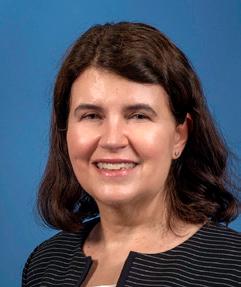
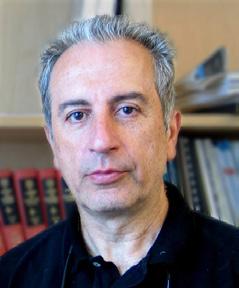


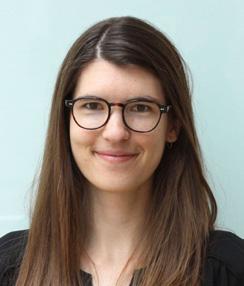
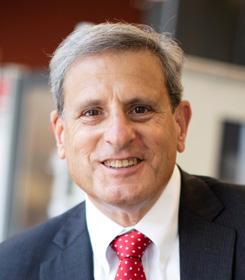

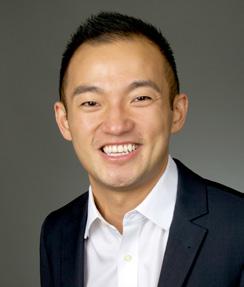
DIANE JOSEPH-MCCARTHY
Professor of the Practice, Biomedical Engineering;
Executive Director, Bioengineering Technology & Entrepreneurship Center
PhD, Physical Chemistry, MIT
Chemical Biology, Biophysics, Computational Science, Drug Discovery & Development.
SIMON KASIF
Professor, Biomedical Engineering PhD, Computer Science, University of Maryland
Genomic systems biology, P4 medicine, wellness and disease prevention, medical bioinformatics, artificial intelligence, machine learning, high performance systems, reproducibility and science informatics.
AHMAD (MO) KHALIL
Associate Professor, Biomedical Engineering; Associate Director, Biological Design Center PhD, Mechanical Engineering, MIT
Synthetic & systems biology; gene regulation; protein aggregation; microbial communities; laboratory evolution.
CATHERINE KLAPPERICH
Professor, Biomedical Engineering; Director, Precision Diagnostics Center; PhD, Mechanical Engineering, University of California, Berkeley
Design of new molecular diagnostics and appropriate technologies for healthcare.
LAURA LEWIS
Assistant Professor, Biomedical Engineering; PhD, Neuroscience, Massachusetts Institute of Technology
Brain imaging; neural dynamics; computational neuroscience and signal processing; neural circuits underlying sleep and attention; decoding and predicting brain activity; neurovascular coupling; psychiatric and neurodegenerative disorders.
KENNETH R. LUTCHEN
Professor, Biomedical Engineering; Dean, College of Engineering
PhD, Biomedical Engineering, Case Western Airway and lung tissue mechanics and ventilation; Computational modeling of structure-function relations in the lung; Mechanical ventilation; Integrated biomechanics of the lung; linear and nonlinear systems identification; blood-glucose regulation.
JEROME MERTZ
Professor, Biomedical Engineering; Physics PhD, Physics, Université Paris VI and University of California, Santa Barbara
Development and application of new optical microscopy techniques to biological imaging.
JOHN NGO
Assistant Professor, Biomedical Engineering PhD, Biochemistry and Molecular Biophysics, California Institute of Technology
Protein structure and engineering; molecular and cellular engineering; single-molecule biophysics; cell signaling; fluorescence and electron microscopy.



HADI T. NIA
Assistant Professor, Biomedical Engineering
PhD, Mechanical Engineering, MIT
Tumor microenvironment; physical sciences of cancer; intravital imaging and animal models of cancer; mechanobiology and biomechanics.
TIMOTHY O’SHEA
Assistant Professor, Biomedical Engineering
PhD, Medical Engineering and Medical Physics, MIT
Glia Engineering, Biomaterials, Neural Engineering, Spinal Cord Injury, Stroke, Glial neurobiology, regenerative medicine, cell transplantation.
ERICA D. PRATT
Assistant Professor, Biomedical Engineering
PhD, Biomedical Engineering, Cornell University
Engineering-focused cancer research, Liquid biopsy and rare cell detection, Multi-Omics in oncology, Microfluidics and microfabrication, Pancreatic Cancer
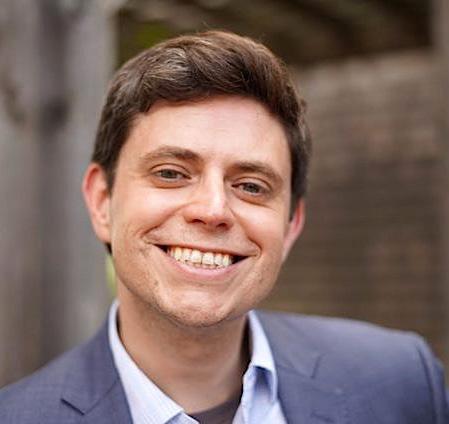
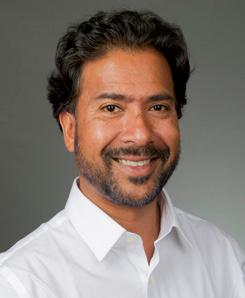

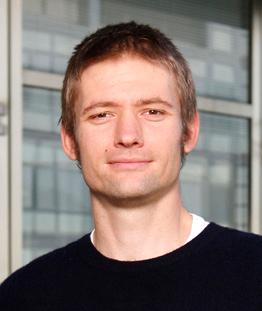
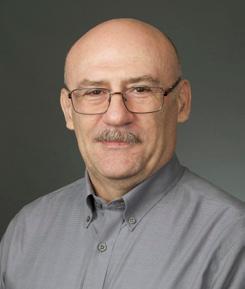
DARREN ROBLYER
Associate Professor, Biomedical Engineering
Director of PhD Program Admissions
PhD, Bioengineering, Rice University
Optical functional imaging; diffuse optics; near infrared spectroscopy; monitoring of emerging targeted and cytotoxic therapies in oncology; non-invasive monitoring of tumor metabolism.
KAMAL SEN
Associate Professor, Biomedical Engineering Director of Master’s Program Admissions
PhD, Physics, Brandeis University
Electrophysiological recording of neural responses in auditory processing; theoretical methods to characterize neuronal encoding; computational models of natural sound processing.
ALLYSON SGRO
Assistant Professor, Biomedical Engineering
PhD, Chemistry, University of Washington
Developing a quantitative and predictive understanding of how cells coordinate their behavior and organize themselves as part of collectives by directly controlling cellular behavior and signaling.
MICHAEL L. SMITH
Associate Professor, Biomedical Engineering
PhD, Biomedical Engineering, University of Virginia
Cellular mechanotransduction through the extracellular matrix; fibronectin structural biology; and microfabricated surfaces for engineering cell function.
DIMITRIJE STAMENOVIĆ
Professor, Biomedical Engineering
PhD, Mechanics, University of Minnesota
Respiratory mechanics; cell mechanics; rheology of soft tissues; mechanics of foam-like structures.



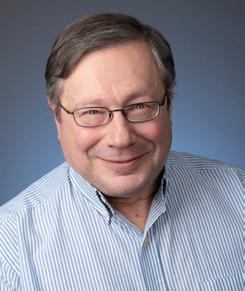
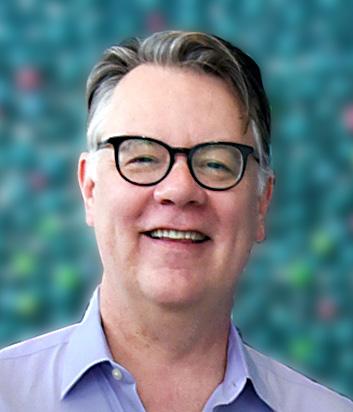
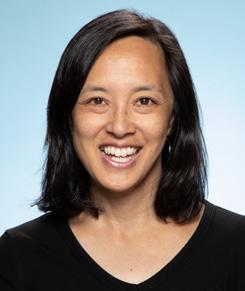
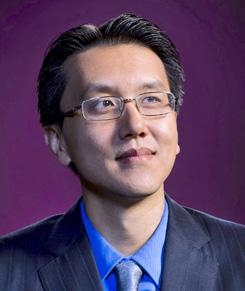

BÉLA SUKI
Professor, Biomedical Engineering
PhD, Biomechanics, Jozsef Attila University, Szeged (Hungary)
Mechanical properties of living tissues; modeling the dynamic and nonlinear behavior of complex biological systems; pulmonary physiology.
JOE TIEN
Associate Professor, Biomedical Engineering
PhD, Physics, Harvard University
Vascularization of biomaterials; quantitative physiology of engineered tissues; biomaterials for microsurgical applications; lymphatics; interstitial transport; inverse problems in vascular imaging.
LUCIA M. VAINA
Professor, Biomedical Engineering; Neurology
PhD, Mathematical Logic, Sorbonne; Doctorat d’Etat ès Sciences and in Médecine (MD PhD); Institut National Toulouse, France
Behavioral, functional imaging (fMRI and MEG) and theoretical & computational approaches to study the neural basis and the plasticity of high-level visual functions in the human brain.
SANDOR VAJDA
Professor, Biomedical Engineering; Director, Biomolecular Engineering Research Center PhD, Chemistry, Hungarian Academy of Science
Scientific computing applied to problems in engineering, biochemistry, and biology, with focus on molecular mechanics, protein structure determination, protein-ligand interactions, docking, and drug design.
JOHN WHITE
Professor and Chair, Biomedical Engineering
PhD, Biomedical Engineering, Johns Hopkins University
Mechanisms of episodic memory; pathophysiology of epilepsy; computational neuroscience; design of real-time instrumentation; imaging of activity in neurons and astrocytes.
JOYCE WONG
Professor, Biomedical Engineering
PhD, Materials Science and Engineering, Program in Polymer Science and Technology, MIT
Biomaterials, tailoring cell-material interfaces for drug delivery and tissue engineering applications; direct, quantitative measurement of biological interactions.
WILSON WONG
Associate Professor, Biomedical Engineering PhD, Chemical Engineering, UCLA
Synthetic and systems biology in immune cells.
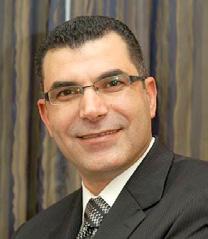
OUSAMA M. A’AMAR
Lecturer, Biomedical Engineering
Ph.D., with Distinction, Electrical Engineering, The National Polytechnic Institute of Lorraine (INPL), France EK131, EK210


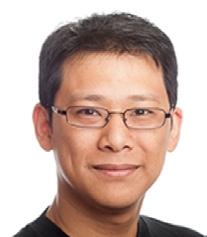
XIN BROWN
Lecturer, Biomedical Engineering; Biointerface Technologies Facility Manager
PhD, Boston University School of Medicine BE209, BE605, BE726, BE727
MARIO CABODI
Master Lecturer, Biomedical Engineering
Director of Professional Master’s Programs
PhD, Cornell University BE694, BE695
ANDERSON (ICHUN) CHEN
Lecturer, Biomedical Engineering; Micro Nano Imaging Facility Manager
PhD, Applied Physics, Stevens Institute of Technology BE517



MUHAMMAD ZAMAN
Professor and Vice Chair, Biomedical Engineering PhD, Physical Chemistry University of Chicago
Comprehensive and quantitative approaches to develop a multiscale understanding of cell-matrix interactions for fundamental biological and applied clinical research.

WYNTER J. DUNCANSON
Lecturer, Biomedical Engineering; Assistant Dean of Outreach and Diversity
PhD, Biomedical Engineering, Boston University BE465, BE466
ANDY FAN
Lecturer, Biomedical Engineering
PhD, Electrical Engineering, MIT BE403, EK103, BE601, BE601, BE603, BE604, Mathematical Methods for Biomedical Engineering
KAVON KARROBI
Lecturer, Biomedical Engineering
BTEC Manager
Ph.D. Biomedical Engineering, Boston University BE492, BE465, BE466
ALEKSANDRS ZOSULS
Instructor, Biomedical Engineering
BS, Biomedical Engineering, Boston University EK210, EK307, BE491, BE492
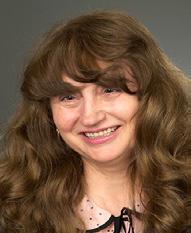
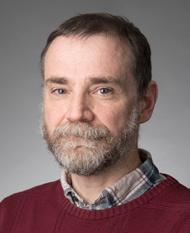
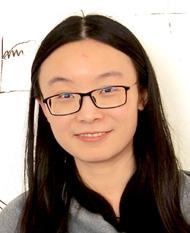
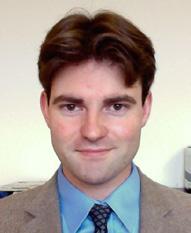

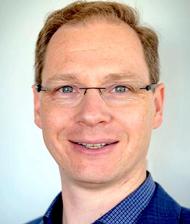



ELIZABETH BARTOLAK-SUKI
Research Assistant Professor, Biomedical Engineering
MD, General Medicine, Szent-Gyorgyi Medical School, Szegred, Hungary; DSc, Molecular Cell biology, Semmelweis Medical School, Budapest, Hungary
Inter/intracellular signaling and molecular/ medical pathology.
DIMITRI BEGLOV
Research Assistant Professor, Biomedical Engineering
PhD, Molecular Biophysics, Moscow
Physical and Technical Institute
Computational chemistry and biology; protein structure and function; computational characterization and prediction of biomolecular interactions.
XIAOJUN CHENG
Research Assistant Professor, Biomedical Engineering
PhD, Physics, City University of New York Light scattering in the tissue and the development optical brain imaging techniques.
AARON COLBY
Research Assistant Professor, Biomedical Engineering
PhD, Biomedical Engineering, Boston University
Developing novel delivery systems including nanoparticles and drug concentrating devices as tools for treating cancer.
AURELIE EDWARDS
Research Professor, Biomedical Engineering
PhD, Chemical Engineering, MIT
Developing mathematical models of water and solute transport in the kidney, at different scales, to address physiological and pathological questions.
JEROEN EYCKMANS
Research Assistant Professor, Biomedical Engineering
PhD, Medical Sciences, KULeuven, Leuven, Belgium
Tissue repair and regeneration, wound healing biomechanics, biomimetic tissueon-chip models, skeletal organoid biology, reverse tissue engineering, fibrosis.
FERNANDO FERNANDEZ
Research Assistant Professor, Biomedical Engineering
PhD, Neuroscience, University of Calgary
Electrophysiology, biophysics and computational neuroscience; understanding the underlying mechanisms of neuronal electrical activity and its implications for synaptic integration and spike output modulation in cortical circuits.
ODED GHITZA
Research Professor, Biomedical Engineering
PhD, Electrical Engineering, Tel Aviv Univ.
Formulation of cortical computation principles that underlie the speech decoding process and that are capable of predicting human performance in speech perception tasks.
DMYTRO KOZAKOV
Research Associate Professor, Biomedical Engineering
PhD, Biomedical Engineering, Boston Univ. Development of protein-protein and protein-ligand docking algorithms, fast and efficient scoring functions for screening large number of potential docked complexes, protein homology. models suitable for docking.
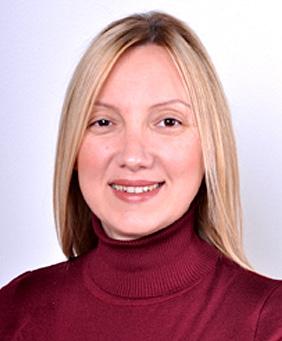



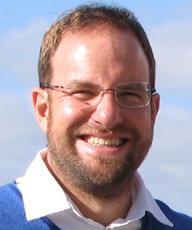
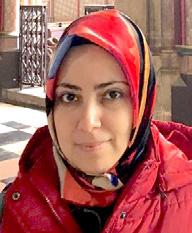
NESE LORTLAR-ÜNLÜ, MD
Visiting Research Associate Professor, Biomedical Engineering
MD, Hacettepe University, Ankara, Turkey Optical characterization and nanophotonics.
BARBARA G. SHINN-CUNNINGHAM
Research Professor, Biomedical Engineering
PhD, EE and Computer Science, MIT Auditory neuroscience - binaural and spatial hearing.
BRIAN SNYDER
Research Professor, Biomedical Engineering
MD and PhD, Biomechanics, University of Pennsylvania
Basic and applied research in musculoskeletal biomechanics, cellular processes, and gene expression.
THOMAS L. SZABO
Research Professor, Biomedical Engineering
PhD, Physics, University of Bath, UK Medical imaging, diagnostic ultrasound, tissue characterization, transduction, biomedical signal processing, wave propagation, nonlinear acoustics.
MARTIN THUNEMANN
Research Assistant Professor, Biomedical Engineering
Eberhard-Karls-Universität Tübingen, Germany, Biochemistry, Dr. rer. nat. Cellular and systems-level neuroscience, microscopy, electrophysiology, preclinical imaging.
MERYEM YUCEL
Research Assistant Professor, Biomedical Engineering PhD, Biomedical Engineering, Boğaziçi University, Istanbul, Turkey Functional neuroimaging (fNIRS, fMRI, EEG), fNIRS signal processing, cognitive neuroscience.




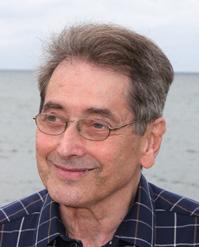
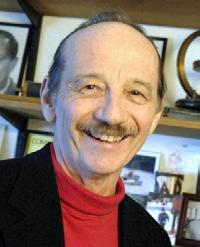


HERNAN JARA, PHD
Adjunct Associate Professor, Biomedical Engineering; Associate Professor of Radiology, BUSM
JULIO COLLADO VIDES, PHD
Adjunct Research Professor, Biomedical Engineering


JOSEPH LEHÁR, PHD
Adjunct Research Professor, Biomedical Engineering
CHRISTINE MCBETH, PHD
Adjunct Research Assistant Professor, Biomedical Engineering
CHARLES CANTOR, PHD
Professor Emeritus, Biomedical Engineering crcantor@bu.edu
H. STEVEN COLBURN, PHD
Professor Emeritus, Biomedical Engineering colburn@bu.edu
EVAN EVANS, PHD
Research Professor Emeritus, Biomedical Engineering cjd@bu.edu
MAXIM D. FRANK-KAMENETSKII
Professor Emeritus, Biomedical Engineering mfk@bu.edu
STEPHEN GROSSBERG, PHD
Professor Emeritus, Biomedical Engineering steve@bu.edu
TEMPLE F. SMITH, PHD
Professor Emeritus, Biomedical Engineering tsmith@bu.edu
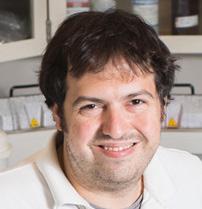




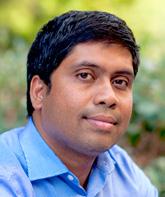



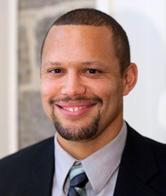

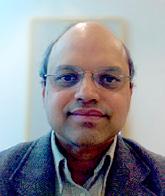
MICHAEL ALBRO, PHD
Assistant Professor, Mechanical Engineering
MARGRIT BETKE, PHD
Professor, College and Grad School of Arts & Sciences, Computer Science
THOMAS BIFANO, PHD Professor, Mechanical Engineering; Materials Science & Engineering; Director, Photonics Center
DAVID BISHOP, PHD
Professor, Electrical and Computer Engineering; Physics; Materials Science & Engineering; Mechanical Engineering; Head, Div. of Materials Science & Engineering; Director, CELL-MET Engineering Research Ctr.
DAVID CENTER, MD Professor of Pulmonary Medicine, Medicine, and Biochemistry; Chief of Allergy, Pulmonary and Critical Care Medicine BUSM
CHANDRAMOULI CHANDRASEKARAN, PHD
Assistant Professor, Anatomy & Neurobiology; Psychological and Brain Sciences; Center for Systems Neuroscience
JERRY CHEN, PHD Assistant Professor, Biology
CHRISTOPHER CONNOR, MD, PHD Assistant Professor, Anesthesiology BUSM
QIANG CUI, PHD Professor, Chemistry
DOUGLAS DENSMORE, PHD Professor, Electrical and Computer Engineering
ANDREW EMILI, PHD Professor, Biology; Biochemistry; Director, Center for Network Systems Biology
SHYAMSUNDER ERRAMILLI, PHD Professor, Physics





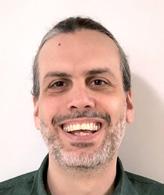
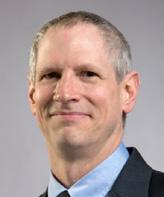
JEFFREY GAVORNIK, PHD
Associate Professor, Biology
LEE GOLDSTEIN, MD, PHD
Associate Professor, Psychiatry; Neurology; Opthalmology; Pathology and Laboratory Medicine BUSM
FRANK GUENTHER, MS, PHD Professor, Sargent College, Speech Language and Hearing Science
JAMES A. HAMILTON, PHD Professor, Physiology and Biophysics BUSM
MICHAEL HASSELMO, PHD Professor, Biology; Director, Center for Systems Neuroscience
LAERTIS IKONOMOU, PHD Assistant Professor, Medicine BUSM
W. CLEMENT KARL, PHD Professor, Electrical and Computer Engineering
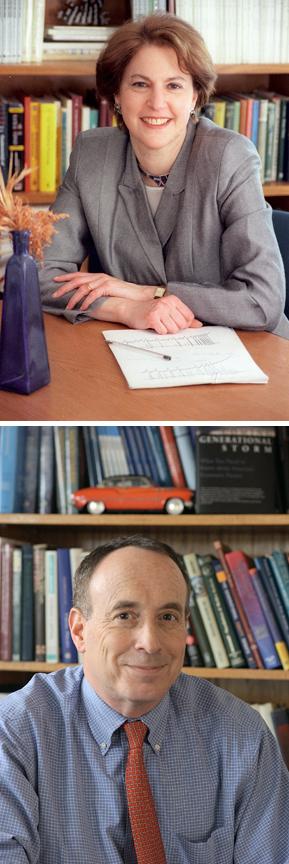
NANCY KOPELL, PHD Professor, Mathematics

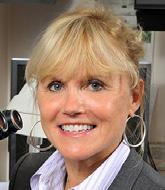
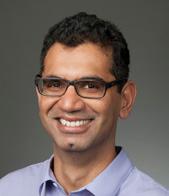

DARRELL N. KOTTEN MD Professor, Medicine, BUSM Director, Center for Regenerative Medicine
ANN MCKEE, MD Professor, Neurology & Pathology, BUSM




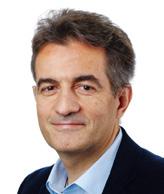
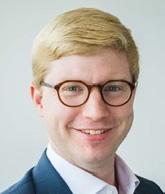

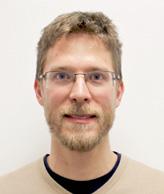

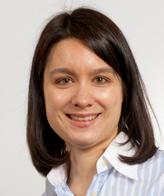
S. HAMID NAWAB, PHD
Professor, Electrical and Computer Engineering
ELAINE O. NSOESIE, PHD
Assistant Professor, School of Public Health
PIETER NOORDZIJ, MD Professor, Medicine BUSM
GEORGE O’CONNOR, MD, MS Professor, Medicine BUSM
IOANNIS PASCHALIDIS, PHD
Professor, Electrical and Computer Engineering
TYLER PERRACHIONE, PHD
Associate Professor, Sargent College: Speech, Language & Hearing Sciences
STEVE RAMIREZ, PHD
Assistant Professor, Psychological & Brain Sciences
TOMMASO RANZANI, PHD
Assistant Professor, Psychological & Brain Sciences
Assistant Professor, Mechanical Engineering; Materials Science & Engineering
ROBERT M. G. REINHART, PHD
Assistant Professor, Psychological & Brain Sciences; Director, Cognitive & Clinical Neuroscience Laboratory
MICHELLE SANDER, PHD
Associate Professor, Electrical and Computer Engineering, Materials Science & Engineering
PANKAJ MEHTA, PHD Professor, Physics
ELISE F. MORGAN, PHD Professor, Mechanical Engineering


BENJAMIN SCOTT, PHD
Assistant Professor, Psychological and Brain Sciences
DANIEL SEGRÈ, PHD
Associate Professor, Biology




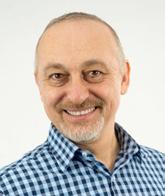

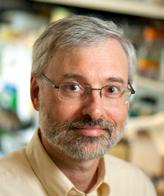

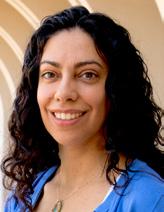
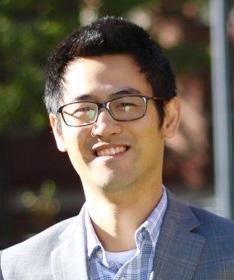
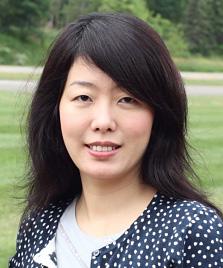

SATISH K. SINGH, MD
Associate Professor, Gastroenterology BUSM
CARA STEPP, PHD
Professor, Sargent College, Speech, Language & Hearing Science
ROBERT A. STERN, PHD Professor, Neurology, Neurosurgery, and Anatomy; Neurobiology BUSM
LEI TIAN, PHD
Assistant Professor, Electrical and Computer Engineering
M. SELIM ÜNLÜ, PHD Professor, Electrical and Computer Engineering
ARTURO VEGAS, PHD Assistant Professor, Chemistry
DAVID WAXMAN, PHD Professor, Biology; BioInformatics; Medicine
ALICE WHITE, PHD Professor and Chair, Mechanical Engineering
ZEBA WUNDERLICH, PHD Assistant Professor, Biology
JI YI, PHD Assistant Professor, Medicine BUSM
KATHERINE YANHANG ZHANG, PHD Professor, Mechanical Engineering
XIN ZHANG, PHD
Professor, Mechanical Engineering; Electrical and Computer Engineering; Materials Science & Engineering
SENIOR POSTDOCTORAL ASSOCIATES
Afzal, Muhammad Imran (Devor)
Li, Huishan (Wong W)
POSTDOCTORAL ASSOCIATES
Alnahhas, Razan (Dunlop)
Andreadni, Virgile (Dunlop)
Angstman, James (Khalil)
Bays, Jennifer (Chen)
Beldzik, Ewa (Lewis)
Bowal, Kimberly (Larkin)
Chiesa, Guilio (Khalil)
Ching, Meining Carley (Zaman)
Dotson, Hannah (W Wong)
Drain, Allison (Chen)
Fomin-Thunmann, Natalie (Devor)
Frostig, Hadas (Mertz)
Gao, Yuanyua (Boas)
Hager, Emily (Sgro)
Jacob, Len (Lewis)
Jaswal, Rajneesh (Galagan)
Kays, Joshua (Dennis)
Kinstlinger, Ian (Wong W)
Klumpe, Heidi (Chen)
Kureli, Gulce (Boas)
Liang, Yong (Wong W)
Lowet, Eric (Han)
Lugagne, Jean-Baptiste (Dunlop)
McLellan, Micheal (Chen)
Moussa, Hagar (Khalil)
Moya, Maria (Economo)
Ngo, Mai (Chen)
Noueihed, Jad (White)
Orubu, Ebiowei (Zaman)
Parate, Kshama (Galagan)
Pham, Thao (Roblyer)
Ravikumar, Arjun (Khalil)
Raymond, Michael (Khalil)
Ricci-Tam, Chiara (Sgro)
Rosenbohm, Justin (Cobodi)
Shaw, William (Khalil)
Sundaram, Subramanian (Chen)
Teo, Jessica (Chen)
Tierrafria, Victor (Galagan)
Uroz, Marina (Chen)
Vayisoglu, Tugberk (Devor)
Wong, Brandon (Khalil)
SENIOR RESEARCH SCIENTISTS
Desai, Darash (Zaman)
Finkelstein, Joshua (Chen)
Kim, Jae (Vajda)
Kilic, Kivilcim (Devor)
RESEARCH SCIENTISTS
Buczek-Thomas, Joann (Wong, J)
Jiang, John (Boas)
Kim, Sudong (Chen)
Kondabolu, Krishnakanth (Han)
Tseng, Hua-an (Han)
Xiao, Sheng (Mertz)
Zimmerman, Bernhard (Boas)
RESEARCH TECHNICIANS
Anakwe, Stephanie (Lewis)
Charles, Roger (Galagan)
Diamandis, Zachary (Lewis)
Dubb, Jay (Boas)
Farzam, Parya (Boas)
Fuzail, Ahsan (Zaman)
Jadeja, Rohan (Bigio)
Kelleher-Tang, Laurie (Chen)
Kura, Sreekanth (Boas)
Lin, Wei (Roblyer)
Matta, Sidney (Economo)
Mlawer, Samuel (Connizzo)
Morales, Christian (J Wong)
Tucker, Stephen (Boas)
Ugarte Nunez, Juan (Economo)
Williams, Stephanie (Lewis)
Yee, Jessica (Lewis)
Zimmerman, Dabriel (Lewis)
Zhou, Samuel (Han)
Boston University’s Department of Biomedical Engineering
maintains a vibrant research program in its approximately 96,000 square feet of space on Boston University’s Charles River Campus. We are comprised of 38 separate research laboratories, and our faculty lead 8 research centers.
The research can be characterized by a combination of:
• Empirical and theoretical work with an attention to explicit mathematical models for the phenomena under study
• Intensive computer use for experimental and theoretical work
• A basic scientific flavor to the fundamental questions being asked
• An attention to the applications of improving health care, and a thorough understanding of the underlying physiological processes
• 4 Training Grants funding PhD students


7/1/21 - 6/30/22
118 new and continuing awards were funded.
$ 132 million in research proposals were submitted.
We have world leaders in these areas of research:
• Biomechanics and Mechanobiology
• Synthetic and Systems Bioengineering
• Molecular-Cellular-Tissue Engineering
• Neural Engineering
Using the enabling technologies:
• Biomaterials
• Biomedical Imaging
• Computation Modeling and Data Sciences
• Nanotechnology and Sensing

BU has eight interdisciplinary research centers that are directed by BME faculty:
Transforming education and innovation for bioengineering students through hands-on learning in partnership with industry, from gene editing to biosensors to digital medicine
To rigorously understand life’s design principles and re-engineer them to revolutionize our approach to addressing critical challenges in human health and the environment
Developing and applying computational methods for the analysis and design of structures, functions, interactions, regulation and evolution of biological macromolecules
Fostering research and engagement with the global challenge of forced displacement, through multidisciplinary teams from across BU, around the country, and around the world
Developing tissue-engineering principles to create scalable, low-cost technologies for growing clinically significant cardiac tissues from cell-level building blocks
Where nanomaterials intersect medicine and energy through collaborative interdisciplinary research
Advancing our understanding and treatment of brain disorders through advanced optical science and photonic systems
Discovery, design and development and clinical translation of technology for disease screening and monitoring, treatment management and health maintenance
BIGIO VALIDATION OF LIGHT SCATTERING SPECTROSCOPY FOR INTRA-OPERATIVE MARGIN GUIDANCE DURING ORAL CANCER RESECTION NIDCR (sub BMC) 180322
gggggggggggggggggggggggggggggggggg gggggggggggggggggggggggggggggggggg
gggggggggggggggggggggggggggggggggg
BIGIO OPTIMIZATION AND VALIDATION OF QUANTITATIVE BIREFRINGENCE MICROSCOPY FOR ASSESSMENT OF MYELIN PATHOLOGIES ASSOCIATED WITH COGNITIVE IMPAIRMENTS AND MOTOR DEFICITS IN YOUNG AND OLD AGING MONKEY BRAIN NIA 569055
BOAS THE IMPACT OF MICROVASCULAR (DYS)REGULATION ON CEREBRAL FLOW AND OXYGEN HETEROGENEITY NINDS 620265
BOAS IMAGING AND ANALYSIS TECHNIQUES TO CONSTRUCT A CELL CENSUS ATLAS OF THE HUMAN BRAIN NIMH (sub MGH) 295122
BOAS TIME-GATED DIFFUSE CORRELATION SPECTROSCOPY FOR FUNCTIONAL IMAGING OF THE HUMAN BRAIN
(sub MGH)
gggggggggggggggggggggggggggggggggg
BOAS THE NEUROSCIENCE OF EVERYDAY WORLD- A NOVEL WEARABLE SYSTEM FOR CONTINUOUS MEASUREMENT OF BRAIN FUNCTION
gggggggggggggggggggggggggggggggggg
BOAS MULTISPECTRAL AND HYPERSPECTRAL PRECLINICAL IMAGER SPANNING THE VISIBLE, NIR-I AND NIR-II NIH/Office of the Director 404300
CHEN NOTCH SIGNALING AND ADHESION REGULATION NHLBI 825000
gggggggggggggggggggggggggggggggggg
CHEN LOCAL REGULATION OF ANGIOGENESIS BY MICROENVIRONMENT
CHEN NOVEL STRATEGIES TO UNDERSTAND, PREDICT, AND PREVENT VASCULAR TOXICITY OF TARGETED CML THERAPIES
(sub NEMC) 180781
gggggggggggggggggggggggggggggggggg
CHEN DEFINING GENETIC ARCHITECTURE AND PATHWAYS OF DCM NHLBI (sub Wyss Inst) 30380
CHEN MULTI-TISSUE PLATFORM FOR MODELING SYSTEMIC PATHOLOGIES NIBIB (sub Wyss Inst)
gggggggggggggggggggggggggggggggggg
CHENG UNVEILING THE MECHANISMS OF ULTRASOUND NEUROMODULATION VIA SPATIALLY CONFINED STIMULATION AND TEMPORALLY RESOLVED RECORDING
gggggggggggggggggggggggggggggggggg
CHENG SENSING VULNERABLE PLAQUE IN VIVO BY AN ALL-OPTICAL INTRAVASCULAR ULTRASOUND AND PHOTOACOUSTIC CATHETER
634489
gggggggggggggggggggggggggggggggggg
CHENG MAPPING CANCER METABOLISM BY MID-INFRARED PHOTOTHERMAL MICROSCOPY NCI 398440
CHENG UNVEILING THE MECHANISMS OF ULTRASOUND NEUROMODULATION VIA SPATIALLY CONFINED STIMULATION AND TEMPORALLY RESOLVED RECORDING
gggggggggggggggggggggggggggggggggg
CHENG METABOLIC ASSESSMENT OF ANTI-MICROBIAL SUSCEPTIBILITY WITHIN ONE CELL CYCLE
CHENG TARGETING LIPID UNSATURATION IN OVARIAN CANCER STEM CELLS
gggggggggggggggggggggggggggggggggg
CHENG HIGH-CONTENT HIGH-SPEED CHEMICAL IMAGING OF METABOLIC REPROGRAMMING BY INTEGRATION OF ADVANCED INSTRUMENTATION AND DATA SCIENCE
gggggggggggggggggggggggggggggggggg
COLLADO-VIDES A COMPREHENSIVE RESOURCE FOR ESCHERICHIA COLI GENOMIC DATA AND TOOLS
gggggggggggggggggggggggggggggggggg
CONNIZZO AGING AND INFLAMMATION IN THE ETIOLOGY OF COMPRESSION-INDUCED TENDON DEGENERATION NIA
CONNIZZO NON UNIFORMITY IN THE PDL: STRUCTURE AND FUNCTION OF THE DENSE COLLAR NIDCR (sub NEMC)
gggggggggggggggggggggggggggggggggg
DENNIS MULTIPLEXED IMAGING IN THE NEAR INFRARED WITH INDIUM PHOSPHIDE QUANTUM SHELLS NIGMS
DENNIS IN VIVO MAPPING OF ENZYME ACTIVITY USING SWIR-EMITTING, SELF-ILLUMINATING QUANTUM DOT SENSORS NIBIB 222750
gggggggggggggggggggggggggggggggggg
DEVOR EFFECTS OF INTRINSIC AND DRUG-INDUCED NEUROMODULATION ON FUNCTIONAL BRAIN IMAGING NIDA 382450
DEVOR MICROSCOPIC FOUNDATION OF MULTIMODAL HUMAN IMAGING NIMH 134300.3
gggggggggggggggggggggggggggggggggg
gggggggggggggggggggggggggggggggggg
DEVOR UNDERSTANDING THE RELATIONSHIPS BETWEEN FUS-BBB OPENING, NEUROINFLAMMATION, AND THE NEUROVASCULAR RESPONSE NIBIB (sub BWH) 78776
DEVOR INTEGRATION OF HIGH DEFINITION DISPLAY TECHNOLOGIES WITH PLATINUM NANOROD MICROELECTRODES FOR LARGE SCALE IN-VIVO RECORDING AND STIMULATION NINDS (sub UCSD) 636423
gggggggggggggggggggggggggggggggggg
DEVOR LOCAL NEURONAL DRIVE AND NEUROMODULATORY CONTROL OF ACTIVITY IN THE PIAL NEUROVASCULAR CIRCUIT NINDS 5492099
DUNLOP CELL-TO-CELL HETEROGENEITY AND THE EMERGENCE OF ANTIBIOTIC RESISTANCE NIAID 412189
gggggggggggggggggggggggggggggggggg
DUNLOP QUANTIFYING CLOSTRIDIOIDES DIFFICILE SINGLE-CELL GROWTH DYNAMICS USING TIME-LAPSE ] MICROSCOPY NIAID (sub NEMC) 32111
ECONOMO REVERSE ENGINEERING THE BRAIN STEM CIRCUITS THAT GOVERN EXPLORATORY BEHAVIOR NINDS (sub UCSD) 95124
gggggggggggggggggggggggggggggggggg
ECONOMO LINKING MOTOR CORTEX ACTIVITY AND MOVEMENT IN THE MOUSE OROFACIAL SYSTEM. NINDS 412498
ECONOMO HIGH-THROUGHPUT MAPPING OF SYNAPTIC CONNECTIVITY BETWEEN TRANSCRIPTOMICALLY DEFINED CELL TYPES NIMH 1423833
gggggggggggggggggggggggggggggggggg gggggggggggggggggggggggggggggggggg gggggggggggggggggggggggggggggggggg
EYCKMANS DEVELOPMENT OF A WOUND-ON-CHIP MODEL TO STUDY STROMAL-EPITHELIAL INTERACTIONS DURING TISSUE REPAIR NIBIB 185625
gggggggggggggggggggggggggggggggggg
GALAGAN NOVEL BIOSENSORS BASED ON MINING BACTERIAL TRANSCRIPTION FACTORS NIBIB 655799
GREEN MODEL-GUIDED DESIGN OF RNA STABILIZING ELEMENTS FOR IMPROVED CORONAVIRUS DIAGNOSTICS NIBIB (sub ASU) 420000
gggggggggggggggggggggggggggggggggg
GREEN RAPID LOW-COST PAPER-BASED BIODOSIMETRY THAT REVEALS INDIVIDUAL ORGAN INJURIES NIAID (sub ASU) 143397
gggggggggggggggggggggggggggggggggg
SUPERHYDROPHOBIC DRUG LOADED BUTTRESSES FOR PREVENTION OF LUNG TUMOR RECURRENCE NCI 468259
GRINSTAFF OPTIMIZATION OF NANOPARTICLE TUMOR-LOCALIZATION AND DRUG-LOADING FOR TREATING MESOTHELIOMA NCI 539833
gggggggggggggggggggggggggggggggggg
GRINSTAFF SULFATED POLY-AMIDO-SACCHARIDE (SULPAS) BIOMATERIALS AS ANTICOAGULANTS NHBLI 553824
HAN VOLTAGE IMAGING ANALYSIS OF STRIATAL NETWORK DYNAMICS RELATED TO VOLUNTARY MOVEMENT AND PARKINSONS DISEASE NINDS 477150
gggggggggggggggggggggggggggggggggg gggggggggggggggggggggggggggggggggg
gggggggggggggggggggggggggggggggggg gggggggggggggggggggggggggggggggggg
HAN MULTIDIMENSIONAL OPTIMIZATION OF VOLTAGE INDICATORS FOR IN VIVO NEURAL ACTIVITY IMAGING NIMH
KHALIL EPACE: AN AUTOMATED SYSTEM FOR HIGH-THROUGHPUT, CLOSED-LOOP CONTROL OF CONTINUOUS MOLECULAR EVOLUTION TO ENABLE NOVEL THERAPEUTICS NIBIB 612043
gggggggggggggggggggggggggggggggggg
KHALIL SYNTHETIC TOOLKIT FOR PRECISION GENE EXPRESSION CONTROL AND SIGNAL PROCESSING IN MAMMALIAN CELLS NIBIB 675046
gggggggggggggggggggggggggggggggggg
gggggggggggggggggggggggggggggggggg
KHALIL PROGRAMMABLE BENCHTOP BIOREACTORS FOR SCALABLE ECO-EVOLUTIONARY DYNAMICS OF THE HUMAN MICROBIOME NIAID 867648
KLAPPERICH FLIPPED BIOMEDICAL GRAND ROUNDS: CREATING A CLINICAL IMMERSION CLASSROOM NIBIB 21600
gggggggggggggggggggggggggggggggggg
LEWIS DEVELOPMENT OF THE HUMAN DYNAMIC NEUROCHEMICAL CONNECTOME SCANNER NIBIB (sub MGH) 36954
LEWIS SLEEP-DEPENDENT MODULATION OF CEREBROSPINAL FLUID FLOW IN AGING AND ACROSS GENETIC RISK FOR ALZHEIMER’S DISEASE NIA 695231
gggggggggggggggggggggggggggggggggg
LEWIS NEUROIMAGING THE IMPACT OF RESPIRATION AND RESPIRATORY-GATED NEUROMODULATION ON HUMAN GLYMPHATIC PHYSIOLOGY NCCIH 666351
LEWIS FMRI TECHNOLOGIES FOR IMAGING AT THE LIMIT OF BIOLOGICAL SPATIOTEMPORAL RESOLUTION NIBIB (sub MGH) 145162
gggggggggggggggggggggggggggggggggg
gggggggggggggggggggggggggggggggggg gggggggggggggggggggggggggggggggggg
LEWIS A CONNECTOME-BASED CLINICAL TRIAL PLATFORM TO PROMOTE EARLY RECOVERY OF CONSCIOUSNESS AFTER TRAUMATIC COMA NICHD (sub MGH) 41942
MERTZ FAST, LARGE-SCALE NEURONAL IMAGING WITH MULTI-Z CONFOCAL MICROSCOPY NIBIB
gggggggggggggggggggggggggggggggggg
MERTZ MULTI-LAYER NEURONAL IMAGING WITH REVERBERATION MULTIPHOTON MICROSCOPY NINDS
MERTZ ULTRAFAST HIGH-CONTRAST VOLTAGE IMAGING IN FREELY MOVING ANIMALS NINDS
gggggggggggggggggggggggggggggggggg
NGO INTEGRATIVE APPROACHES FOR PROBING CELL MECHANOTRANSDUCTION IN HEALTH AND DISEASE NIGMS
NIA CLASSIFYING MALIGNANT PULMONARY NODULES USING BIOPHYSICS-ENHANCED ARTIFICIAL INTELLIGENCE NIBIB
ROBLYER LABEL-FREE MEASUREMENT OF BLOOD LIPIDS WITH HYPERSPECTRAL SHORT-WAVE INFRARED SPATIAL FREQUENCY DOMAIN IMAGING TO IMPROVE CARDIOVASCULAR DISEASE RISK PREDICTION AND TREATMENT MONITORING
gggggggggggggggggggggggggggggggggg gggggggggggggggggggggggggggggggggg
gggggggggggggggggggggggggggggggggg gggggggggggggggggggggggggggggggggg
ROBLYER FREQUENCY DOMAIN DIFFUSE OPTICAL SPECTROSCOPY AND DIFFUSE CORRELATION SPECTROSCOPY FOR ASSESSING INSPIRATORY MUSCLE METABOLISM IN MECHANICALLY VENTILATED PATIENTS NIBIB
ROBLYER FREQUENCY DOMAIN SHORTWAVE INFRARED SPECTROSCOPY (FD-SWIRS) FOR VOLUME STATUS MONITORING DURING HEMODIALYSIS IN END STAGE KIDNEY DISEASE NIDDK
gggggggggggggggggggggggggggggggggg
SGRO CONNECTING SINGLE-CELL SIGNALING DYNAMICS TO MULTICELLULAR DECISION MAKING NIGMS
gggggggggggggggggggggggggggggggggg
SUKI A MULTI-SCALE COMPUTATIONAL MODEL OF THE EXTRACELLULAR MATRIX OF THE LUNG NHLBI
VAJDA ANALYSIS AND PREDICTION OF MOLECULAR INTERACTIONS
gggggggggggggggggggggggggggggggggg
WONG W ADVANCED RECOMBINASE-BASED GENE EXPRESSION TECHNOLOGY IN MAMMALIAN CELLS NIGMS
WONG W PRECISE TUMOR TARGETING WITH LOGIC CAR CIRCUITS
gggggggggggggggggggggggggggggggggg
WONG W ADVANCED RECOMBINASE-BASED GENE EXPRESSION TECHNOLOGY IN MAMMALIAN CELLS
WONG W MULTIPLEXED AND LOGICAL CONTROL OF THE MAMMALIAN TRANSCRIPTOME USING CAS13
gggggggggggggggggggggggggggggggggg
WONG W TARGETING FIBROBLAST DISCOIDIN DOMAIN RECEPTOR 2 FOR IMMUNOTHERAPY TO PULMONARY FIBROSIS NHLBI (sub U Michigan)
WONG W PRECISE TARGETING OF T1D SPECIFIC T CELLS USING CAR AND PEPTIDE-MHC CHIMERIC ANTIGEN LIGANDS NIDDK
WONG J THE BOSTON UNIVERSITY KIDNEY AND MEDICAL ENGINEERING PROGRAM (BU-KIDMEP)
gggggggggggggggggggggggggggggggggg
gggggggggggggggggggggggggggggggggg
gggggggggggggggggggggggggggggggggg gggggggggggggggggggggggggggggggggg
gggggggggggggggggggggggggggggggggg
DUNLOP TRANSITIONS: DEEP LEARNING MODELS FOR MICROBIAL IMAGE ANALYSIS AND TIME-SERIES PREDICTIONS
gggggggggggggggggggggggggggggggggg
HAN COLLABORATIVE RESEARCH: DYNAMIC INTERACTIONS OF INDIVIDUAL NEURONS IN SUPPORTING HIPPOCAMPAL NETWORK OSCILLATIONS DURING BEHAVIOR
gggggggggggggggggggggggggggggggggg gggggggggggggggggggggggggggggggggg
ROBLYER EFRI CEE: OPTICALLY CONTROLLED LOCALIZED EPIGENETIC CHROMATIN REMODELING WITH PHOTOACTIVATABLE CRISPR-DCAS9
CHEN SCIENCE AND TECHNOLOGY CENTER FOR ENGINEERING MECHANO-BIOLOGY
gggggggggggggggggggggggggggggggggg
CHEN NANOSYSTEMS ENGINEERING RESEARCH CENTER FOR DIRECTED MULTISCALE ASSEMBLY OF CELLULAR METAMATERIALS WITH NANOSCALE PRECISION: CELL-MET
gggggggggggggggggggggggggggggggggg
gggggggggggggggggggggggggggggggggg
ZAMAN APTAMER DEVELOPMENT FOR THE PHARMACHK PLATFORM Merck KGaA (Germany) 150000
ROBLYER ESTIMATING BLOOD PRESSURE CHANGES USING LASER SPECKLE CONTRAST MEASUREMENTS ON THE WRIST AND HAND Facebook 369264
gggggggggggggggggggggggggggggggggg
GREEN INTERCEPTING THE CELL’S HIDDEN SIGNALS VIA PEPTIDE-ACTIVATED RNA SWITCHES Research Corporation for Science Advance 55000
gggggggggggggggggggggggggggggggggg
BOAS COMPARING LASER SPECKLE CONTRACT AND DIFFUSE CORRELATION SPECTROSCOPY MEASUREMENTS IN HUMAN BRAIN FUNCTION Facebook 23000
gggggggggggggggggggggggggggggggggg
GRINSTAFF BIOADHESIVE FORM IN PLACE PATCH DEVELOPMENT
GRINSTAFF NOVEL ANTIBODY-DRUG CONJUGATES FOR SQUAMOUS CELL CARCINOMA TREATMENT
Boston Scientific Corp. 65137
gggggggggggggggggggggggggggggggggg
gggggggggggggggggggggggggggggggggg
NIA CELLULAR RESOLUTION IMAGING OF DRUG DELIVERY INTO TUMORS IN FUNCTIONING EX VIVO LUNG Johnson & Johnson Enterprise Innovation 250000
WONG W EVALUATING NOT-GATED CARS IN NK CELLS Senti Biosciences 241671
KHALIL DESIGN AND IN VIVO COMPARISON OF ALTERNATIVE STRATEGIES FOR ARTIFICIAL ZINC FINGER Novartis Institutes for (AZNF) BASED REGULATABLE GENE THERAPIES
KHALIL SEMI-CONTINUOUS EVOLUTION OF DNMT3A/L-BINDING NANOBODIES FOR TARGETED EPIGENOME EDITING
Medicine, Inc. 260047
gggggggggggggggggggggggggggggggggg
gggggggggggggggggggggggggggggggggg
gggggggggggggggggggggggggggggggggg gggggggggggggggggggggggggggggggggg gggggggggggggggggggggggggggggggggg
CHENG AN INFRARED PHOTOTHERMAL PHASE MICROSCOPE FOR HIGH-RESOLUTION CHEMICAL Leonardo DRS Daylight IMAGING IN FINGERPRINT REGION Solutions 216972
CHENG IMAGING BREAST TUMOR BY A
gggggggggggggggggggggggggggggggggg
DIAL-A-THREAT YEAR 2
gggggggggggggggggggggggggggggggggg
KHALIL DRAPER TEAM FELIX PROPOSAL
gggggggggggggggggggggggggggggggggg
PERSONNEL AGREEMENT FOR RESEARCH SERVICES OF A’AMAR
WONG J BIOMATERIALS SCIENCE AND ENGINEERING APPROACH FOR LOCAL PROGESTERONE INACTIVATION
gggggggggggggggggggggggggggggggggg
SHAW DECIPHERING GENETIC AND EPIGENETIC REGULATION IN EUKARYOTIC GENE CLUSTERS USING SYNTHETIC GENOMICS
gggggggggggggggggggggggggggggggggg
CHEN ENGINEERING HIGH DENSITY FUNCTIONAL VASCULAR, LYMPHATIC, AND DUCTAL TREES
gggggggggggggggggggggggggggggggggg
gggggggggggggggggggggggggggggggggg
ECONOMO THE DESCENDING CONTROL OF MOVEMENT INITIATION BY THE MOTOR CORTEX THE ESTHER A. & JOSEpH KLINGENSTEIN
ECONOMO INVESTIGATING THE CONTROL OF MOVEMENTS BY SuBSpACES AND CELL TYpES IN THE MOuSE OROFACIAL SYSTEM WHITEHALL FOuNDATION, INC 75000
gggggggggggggggggggggggggggggggggg
ZAMAN FELLOWSHIp IN QuALITY OF MEDICAL pRODuCTS AT BOSTON uNIVERSITY uS pHARMACOpEIAL CONVENTION 138855
ZAMAN EVALuATION OF FEASIBILITY FOR GRAND CHALLENGES pAKISTAN pARTNERSHIp II BILL & MELINDA GATES FOuNDATION 330199
gggggggggggggggggggggggggggggggggg
ZAMAN DOCuMENTING uNICEF’S WORK IN HEALTH SECTOR IN HuMANITARIAN SETTINGS uSING MODELLING, YR2 uNITED NATIONS CHILDREN S FuND 35000
gggggggggggggggggggggggggggggggggg
O’SHEA pROMOTING GLIA-BASED REpAIR IN SpINAL CORD INJuRY BRYON RIESCH pARALYSIS FOuND. 60000
gggggggggggggggggggggggggggggggggg
O’SHEA GLIA REpAIR OF CHRONIC SCI LESION CORES BY A SEQuENTIAL ENZYMATIC DEBRIDEMENT AND CELL GRAFTING STRATEGY WINGS FOR LIFE 220000
gggggggggggggggggggggggggggggggggg
LEWIS SpI STEVENS: GLIAL MECHANISMS BY WHICH SLEEp pRESERVES COGNITIVE FuNCTION AND pLASTICITY IN AGING SIMONS FOuNDATION 250000
gggggggggggggggggggggggggggggggggg
LEWIS HARVARD uNIVERSITY/MASSACHuSETTS INSTITuTE OF TECHNOLOGY JOINT RESEARCH GRANT pROGRAM IN BASIC NEuROSCIENCE HARVARD 23487
LEWIS SuBCORTICAL CIRCuIT DYNAMICS uNDERLYING HuMAN SLEEp AND WAKEFuLNESS THE pEW CHARITABLE TRuSTS 300000
LEWIS IMAGING ELECTROpHYSIOLOGICAL AND FLuID DYNAMICS IN THE SLEEpING BRAIN THE MCKNIGHT FOuNDATION 75000
ROBLYER A WEARABLE pROBE FOR DEEp TISSuE IMAGING OF HEMODYNAMICS IN BREAST TuMORS ACS 360000
gggggggggggggggggggggggggggggggggg gggggggggggggggggggggggggggggggggg
DENNIS DEEp TISSuE pHOTOACOuSTIC IMAGING WITH DEGRADABLE INORGANIC NANOpARTICLES SILICON VALLEY COMMuNITY (SCIALOG-DENNIS) FOuNDATION 57500
gggggggggggggggggggggggggggggggggg gggggggggggggggggggggggggggggggggg
NIA CLARE BOOTHE LuCE GRADuATE FELLOWSHIp FOR GABRIELLE GRIFNO THE HENRY LuCE FOuNDATION, INC 88654
gggggggggggggggggggggggggggggggggg
NIA DEVELOpMENT OF CRYSTAL RIBCAGE FOR IMAGING OF FuNCTIONING LuNG AT HIGH THE ARNOLD AND MABEL SpATIOTEMpORAL RESOLuTION BECKMAN FOuNDATION 150000
GRINSTAFF RELAXIN-2 AS A NOVEL INTRA-ARTICuLAR THERApEuTIC FOR ARTHROFIBROSIS BLAVATNIK FAMILY FOuNDATION (SuB BIDMC) 79455
gggggggggggggggggggggggggggggggggg gggggggggggggggggggggggggggggggggg gggggggggggggggggggggggggggggggggg
WONG W ENGINEERING BRANCHING NETWORKS THROuGH SYNTHETIC TuRING MORpHOGEN CIRCuITS ALLEN INSTITuTE D/B/A THE pAuL G. ALLEN 1300000
KHALIL SCHMIDT SCIENCE pOLYMATH AWARD THE ERIC AND WENDY SCHMIDT FuND FOR STRATEGIC INNOVATION 500000
gggggggggggggggggggggggggggggggggg
uROZ MARIMON MELANOMA VESSEL CO-OpTION IN BRAIN METASTASIS AHA 69446
CHEN GEOMETRIC AND MECHANICAL pATTERNING OF HIERARCHICAL VASCuLAR NETWORKS uNITED STATES - ISRAEL BINATIONAL SCIENC 33750
gggggggggggggggggggggggggggggggggg
HAGER uSING NATuRAL VARIATION AND CELLuLAR SLIME MOLDS TO uNCOVER COLLECTIVE CELL SIMONS FND (SuB LIFE SIGNALING RuLES (SIMONS FOuNDATION
gggggggggggggggggggggggggggggggggg
gggggggggggggggggggggggggggggggggg
gggggggggggggggggggggggggggggggggg
gggggggggggggggggggggggggggggggggg
gggggggggggggggggggggggggggggggggg
gggggggggggggggggggggggggggggggggg gggggggggggggggggggggggggggggggggg gggggggggggggggggggggggggggggggggg gggggggggggggggggggggggggggggggggg
gggggggggggggggggggggggggggggggggg gggggggggggggggggggggggggggggggggg
ENROLLMENT FOR AY 2021-2022
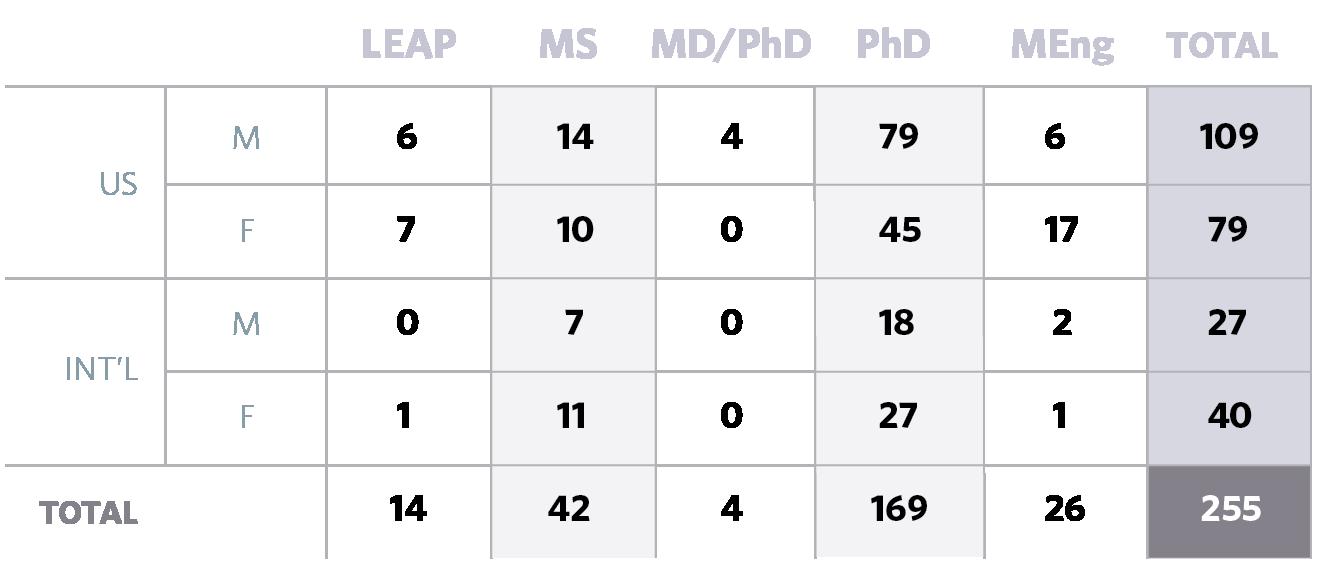
GRADUATE PROGRAM POPULATION

g MEng
g PhD
g MD/PhD
g MS
GRADUATE FUNDING AY 2021-2022

DEGREES AWARDED

ADMISSION RESULTS FOR AY 2020-2021

ADMISSION RESULTS FOR AY 2021-2022
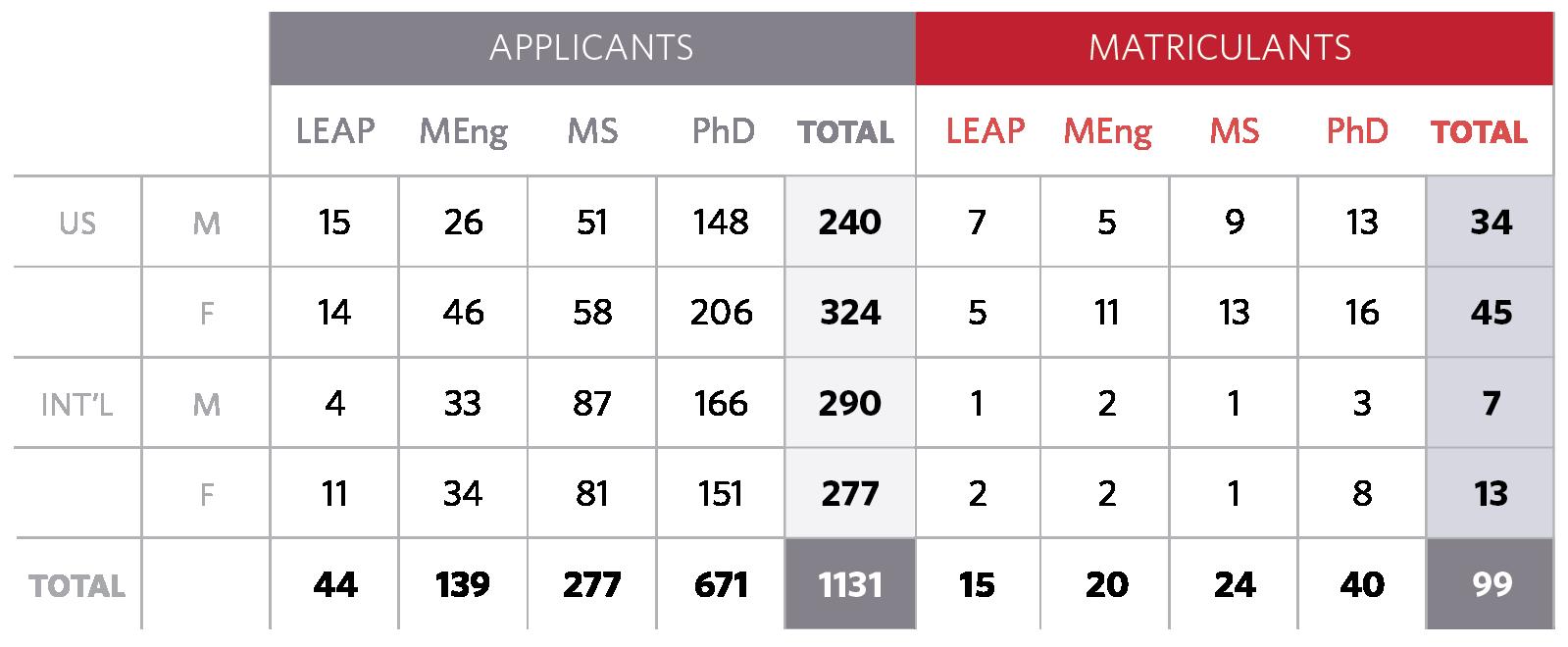
SEPTEMBER 25, 2021
Samantha Marie Berry (Mark Grinstaff, PhD Advisor)
“Supramolecularly Assembled Antibody Drug Conjugate for the Treatment of Non-Small Cell Lung Cancer”
Israel Tilahun Desta (Sandor Vajda, PhD Advisor)
“Machine Learning and Template Based Modeling for Improving and Expanding the Functionality of Rigid Body Docking”
Yunpeng Feng (Arturo Vegas, PhD Advisor)
“Synthesis and Evaluation of Polymer Mosaics as Highly Tunable Biomaterials for Biomedical Applications”
Catherine Anne Gormley (Joyce Wong, PhD Advisor)
“Targeted Semi-Polymerized Shell Microbubbles for Detection of Early Post-Surgical Abdominal Adhesions”
Matti David Tyry Groll (Cara Stepp, PhD Advisor)
“The Quantitative Assessment of Laryngeal Physiology”
Haonan Lin (Ji-Xin Cheng, PhD Advisor)
“Stimulated Raman Spectroscopic Imaging: Data Science Driven Innovations and Applications”
Christos Michas (Christopher Chen and Alice White, PhD Co-Advisors)
“High-Precision Fabrication Enables On-Chip Modeling with OrganLevel Structural and Mechanical Complexity”
Justin Michael Rosenbohm (Catherine Klapperich, PhD Advisor)
“Qualitative and Semiquantitative Isothermal Detection of Nucleic Acids for Point-of-Care Testing Applications”
Smrithi Sunil (David Boas, PhD Advisor)
“Wide-Field Optical Imaging of Neurovascular Coupling During Stroke Recovery”
JANUARY 25, 2022
Cameron James Condylis (Jerry Chen, PhD Advisor)
“Cell Type-Specific Encoding and Routing of Sensory Information in Mouse Primary Somatosensory Cortex During Behavior”
Megan Elizabeth Egbert (Sandor Vajda, PhD Advisor)
“Detection and Analysis of Binding Sites and Protein-Ligand Interactions”
Joshua Christian Kays (Allison Dennis, PhD Advisor)
“Towards the Clinical Translation of Quantum Dots: Current Preclinical Barriers and Future Strategies”
Jeffrey Blye McMahan (John Ngo, PhD Advisor)
“Post-Translational Control Schemes in the Regulation of Synthetic Cellular Signaling via Engineered Notch Receptors”
Bahar Rahsepar (Steve Ramirez and John White, PhD Co-Advisors)
“Novel Strategies for the Modulation and Investigation of Memories in the Hippocampus”
Juliann Brina Tefft (Christopher Chen, PhD Advisor)
“The Impact of Perivascular Cells on Vascular Morphogenesis and Stability”
MAY 22, 2022
Hannah Lin Dotson (John Ngo, PhD Advisor)
“Chemogenetic Control of Gene Expression and Protein Function with Small Molecules”
Samuel Joseph Ghilardi (Allyson Sgro, PhD Advisor)
“Investigation and Control of Dermal Fibroblast Signaling During Injury Repair”
Gwendolyn Ann Hoffmann (Michael Smith and Joyce Wong, PhD Co-Advisors)
“Mechanically Active and Tunable Extracellular Matrix Fibers”
Seunghee Lee (Wilson Wong, PhD Advisor)
“Engineering Inhibitory Chimeric Antigen Receptor for Adoptive T Cell and NK Cell Therapy”
Justin Henry Letendre (Wilson Wong, PhD Advisor)
“Genetic Circuit Designs to Improve Synthetic Biological Signaling in Mammalian Cells”
Jad Noueihed Noueihed (John White, PhD Advisor) “Unsupervised Tracking and Automated Analysis of MultiPopulation Neural Activity Under Anesthesia”
Sanaya Ness Shroff (Xue Han, PhD Advisor)
“Optimization and Application of a High- Performance GeneticallyEncoded Fluorescent Sensor for Membrane Voltage Imaging”
Shannon Nicole Tunney (John Ngo, PhD Advisor) “Construction of Molecular Tools through Protein Excision and Splicing”
Dana Zemel (Xue Han, PhD Advisor)
“Pathological Neural Circuit States of the Dorsal Striatum in Parkinson’s Disease”
SEPTEMBER 25, 2021
Mercedes Suazo
MAY 22, 2022
Angela Maria Abrego Chavez
Thomas Clark Bohac
Rana Boustany
Sophia Grace Brocoum
Donivyn Cruz
Graham Edward Fullerton
Aideen Gill
Ellen Larson
Joel Stewart Miller
Kameron James Moore
Julia Pasco-Anderson
Ronak S. Shah
Acacia Thunder Tam
Elizabeth Grace Thaman
Claire Tourkin
Niketh Sam Vellanki
Hallie L. Wyles
Qian Xu
SEPTEMBER 25, 2021
Bilal Syed Ahmed (Muhammad Zaman, MS Thesis Advisor)
“Development for a Blood Separation Method for Low- and Middle-Income Countries”
Danyal Fareed Bhutto (David Boas and Matthew Rosen, PhD Co-Advisors)
“From Optimal Experimental Design to Solving Inverse Problems for Various Imaging Modalities: Analyzing the Applicability and Robustness of Manifold Learning”
Caroline Margret Blassick (Mary Dunlop, PhD Advisor)
“Single-Cell Optogenetic Selection and Activation of Engineered Escherichia coli Transcription Factors for the Characterization and Prediction of Gene Regulatory Network Dynamics”
Emma Penelope Bortz (Xue Han, PhD Advisor)
“Strategies for Effective Ultrasound Neuromodulation”
Patrick Robert Doran (Anna Devor, PhD Advisor)
“Simultaneous Optical Imaging of Neuronal Activity and fMRI in Behaving Mice”
Carlos Augusto Gomez (Darren Roblyer, PhD Advisor)
“Combined Diffuse Optical Spectroscopy and Diffuse Correlation Spectroscopy Towards Monitoring of Inspiratory Muscle Metabolism of Mechanically Ventilated Patients”
Daniel James Hart Jr (Mo Khalil, PhD Advisor)
“Automated Atmospheric Control of Microbial Growth with Atmostat eVOLVER”
Liam Jackson (Frank Guenther, MS Mentored Project Advisor)
“Exploring the Significance of Electrocorticography Data with Machine Learning”
Jack Rainier Kirsch (Mark Grinstaff, PhD Advisor)
“Multimodal Delivery of Relaxin-2 for the Treatment of Arthrofibrosis”
Alex Andrew Lammers (Christopher Chen, PhD Advisor)
“Elucidating Mechanisms for Rapid Vascularization by Mimicking Vascular Islands in Early Embryogenesis”
Erin Elizabeth Landry
Yiting Liu (Aurelie Edwards, MS Mentored Project Advisor)
“Python-Based Model of Proximal Tubule Function”
Adam Gordon Sanford (Mo Khalil, PhD Advisor)
“Scalable, Continuous Directed Evolution of Nanobody-Based GPCR Agonists”
Mark Paladin Suprenant (Muhammad Zaman, PhD Advisor)
“Understanding the Link Among Diarrheal Diseases, Antimicrobial Resistance and Nutrition for the Improvement of Childhood Lives in Humanitarian Crisis”
Indorica Sutradhar (Muhammad Zaman, PhD Advisor)
“Quantitative Model of the Development of Antibiotic Resistant Bacterial Populations in Wastewater Settings”
Shane Howard Wright
Sue Shuyi Zhang (Mark Grinstaff and Hadi Nia, PhD CoAdvisors)
“Probing the Physical Tumor Microenvironment”
JANUARY 25, 2022
Kavindu Amarasinghe (Bela Suki, MS Mentored Project Advisor)
“Assessment of Microfluidic Flow Chamber for Analyzing Shear Moduli of Various Agarose Gel Samples”
Pierre Boucher (Chandramouli Chandrasekaran, MS Thesis Advisor)
“Gain Signal Manifest in Prestimulus Neural Population Dynamics Underlies Decision-Making”
Zahava Miriam Hirsch (Muhammad Zaman, MS Mentored Project Advisor)
“Modeling Access to IHS Healthcare for Rosebud Sioux Tribe Living on the Rosebud Indian Reservation”
Brendan Leap (David Boas, MS Mentored Project Advisor)
“bNIRDS Data Analysis”
Yue Liu
(Michael Albro, MS Mentored Project Advisor)
“Culture Media Replenishment Is Not Required to Generate Functional Engineered Cartilage in vitro”
Monica Martinez
(James Galagan, MS Thesis Advisor)
“Microbial Screening for Melatonin Responsive Enzymes”
Jacob Norman (John White, PhD Advisor)
“Investigating the Neuronal Basis of Engram Reactivation”
Rachel Lindsay Passaro (Hadi Nia, MS Mentored Project Advisor)
“Modelling Solid Stress in vitro with Cancer Spheroids”
Nicole Amber Rinaldi
Zian Wang (Ji-Xin Cheng, MS Mentored Project Advisor)
“Rapid Antifungal Susceptibility Testing (AFST) by Spectroscopic Stimulated Raman Scattering (SRS) Imaging of D2O Metabolism”
Hanrong Ye (Mo Khalil and Joyce Wong, PhD CoAdvisors)
“Infection Control and Immune Modulation with Monocyte-Targeting Nanoparticles and MacrophageBased Cell Therapy -- a Dual-Pronged Intervention System for Tuberculosis (TB)”
Jing Zhang (Ji-Xin Cheng, PhD Advisor)
“Single-Cell Analysis: From Phenotype to Genotype”
MAY 22, 2022
Rohin Banerji (Hadi Nia, PhD Advisor)
“Design, Development, and Validation of a Novel Crystal Ribcage to Study the Mechanobiology of Functioning Lung in Health and Disease at High Spatiotemporal Resolution”
Marcus W. Blackburn
(Mike Economo and Gabriel Ocker, MS Mentored Project Co-Advisors)
“Investigating Burst-Multiplexing in Visual Stimulus Encoding”
Xiaojie Chen
(Anna Devor, MS Thesis Advisor)
“Using Neurophotonic Tools to Access the Effects of Repeated BloodBrain-Barrier Opening with Focused Ultrasound”
Ramtin Jadbabaei Behbahan (Mark Grinstaff, MS Mentored Project Advisor)
“Synthesis, Optimization, and Characterization of Paclitaxel, Pt(IV) Cisplatin Prodrug, and Verticillin-A Expansile Nanoparticles (eNP) for Treatment of Epigenetically Resistant Mesothelioma”
Vibhav Jha
(Kamal Sen, MS Mentored Project Advisor)
“Decoding Spatial and Auditory Attention Using fNIRS and EEG
Simultaneously: Protocol, Cap Design and Analysis”
Sophia Kuipa
Uros Kuzmanovic
(James Galagan, PhD Advisor)
“Mining Metagenomes to Engineer Novel Hormone Biosensors”
Maximillian J Rozenblum
Alex Joseph Seibel (Joe Tien, PhD Advisor)
“Tissue-Engineered Human Lymphatic Models for the Study of Breast Cancer and Lymphatic Drainage”
Chenxin Sun
(Michelle Sander and Panagis Samolis, MS Mentored Project Co-Advisors)
“Photothermal Imaging of Mouse Glioblastoma Tumor Tissues”
Winnie Wang
(Jeroen Eyckmans, MS Thesis Advisor)
“Development of a Synthetically Modified Fibronectin Fragment as a Building Block for Recyclable Biomaterials”
Weerathunga Arachchige Hasini
Rathsara Weerathunge
(Cara Stepp, PhD Advisor)
“Sensorimotor and Kinematic Characterization and Modeling of Speech Motor Control in Individuals with Speech Disorders”
Clare Boothe Luce Fellowship: Gabrielle Grifno
Dean’s Fellowships: Aarohi Mehendale, Leo Steiner
Distinguished BME Fellowships: Mohammed Abumuaileq, Alexander Boyd, Morgan Cambareri, Dhimiter Cobani, Emily Davis, Jingwen Deng, Maren Eltze, Harrison Fisher, Joseph Hall, Xingyu Hu, Zhuoying Huang, Mackenzie Hyman, Yixin Mei, Arun Nambiar, Kirk Pierce, Aidan Riley, Andrea Rosado-Quinones, Colin Skeen, Haochen Wan, Paige Woods, Hao Zang
F31 Fellowships: Jourdan Ewoldt, Gwendolyn Hoffman, Alex Lammers, Justin Letendre, Rebecca Mount, Sanaya Shroff
Kilachand Fellowships: Cristian Coriano-Ortiz, Daniel Hart, Xinwen Zhu
MLK Fellowship: Joshua Dupaty
NIH Quantitative Biology and Physiology T32 Fellowships: Diana Arguijo Mendoza, Sydney Bailes, Jack Cardini, Juan Jaramillo Montezco, Christopher Kuffner, Joshua Levitt, Carolyn Marar, Dev Mehrotra, Jack Vincent, McKayla Vlasity
NIH Synthetic Biology and Biotechnology T32 Fellowships: Sophia Kuipa, Noshin Nawar, Ezira Yimer Wolle
NIH Translational Research in Biomaterials T32 Fellowships: Eric Bressler, Alanna Farrell, Samantha Fletcher, Zoe Garman, Joshua McGee
NSF Graduate Research Fellowships: Danyal Bhutto, Caroline Blassick, Emma Bortz, Christian DeMoya, Padric Garden, Ariane Garrett, Carlos Gomez, Alison Lanzi, Alexander Marzilli, Christine McKee, Cara Ravasio, Emma Stowe
NSF Neurophotonics National Research Traineeship Program Fellowships: De’Ja Rogers
Society for Lab Automation & Screening Graduate Fellowship: David McIntyre
Mammalian Synthetic Biology Workshop (Talk): Menna Siddiqui
Acoustical Society of America, Raymond H. Stetson Scholarship, Honorable Mention: Hasini Weerathunge
NSF STTR Phase I Award: Uros Kuzmanovic
TiE University Regional Pitch Competition 1st Place Winner: Uros Kuzmanovic
M2D2 $200K Challenge 1st Place Winner: Uros Kuzmanovic
TiE University Global Pitch Competition 1st Place Winner: Uros Kuzmanovic
Hatch@Nest.Bio Award Winner: Uros Kuzmanovic
Northeast Bioengineering Conference 2022 (Poster): Yoseph Dance
National Institutes of Health/National Cancer Institute Cancer Tissue Engineering Collaborative Investigators Meeting (Poster/ Presentation): Yoseph Dance
WHS Annual Meeting 2022 (Talk): Megan Griebel
QBP/TRB/SB2 Graduate Research Symposium: Speakers - Nate Blanke, Mitch Clough, Yoseph Dance, Zachary Heins, Joshua Kays, Rebecca Mount Posters - Sydney Bailes, Emma Bortz, Christian DeMoya, Carlos Gomez, Jack Kirsch, Chris Kuffner, Josh Levitt, Carolyn Marar, Indorica Sutradhar, Sue Zhang
ENROLLMENT FOR AY 2021-2022
588 STUDENTS in the BME program 34% of the College of Engineering

COLLEGE OF ENGINEERING SELECTIVITY FOR AY 2021-2022
41% INCREASE in selectivity over 9 years

30% Selectivity
BME TEACHING HISTORY - AY 2021-2022
89 COURSES TAUGHT
40 PRIMARY FACULTY
$52 MILLION in research funding

10,101 total student credit hours
BS DEGREES BREAKDOWN - AY 2021-2022
The Department awarded 126 BACHELOR OF SCIENCE DEGREES 28% of all the BS degrees awarded by the College of Engineering.
TRACKING ALUMNI
91% EMPLOYED or ENROLLED IN GRADUATE SCHOOL of 2020-2021 graduates
MMEDIC
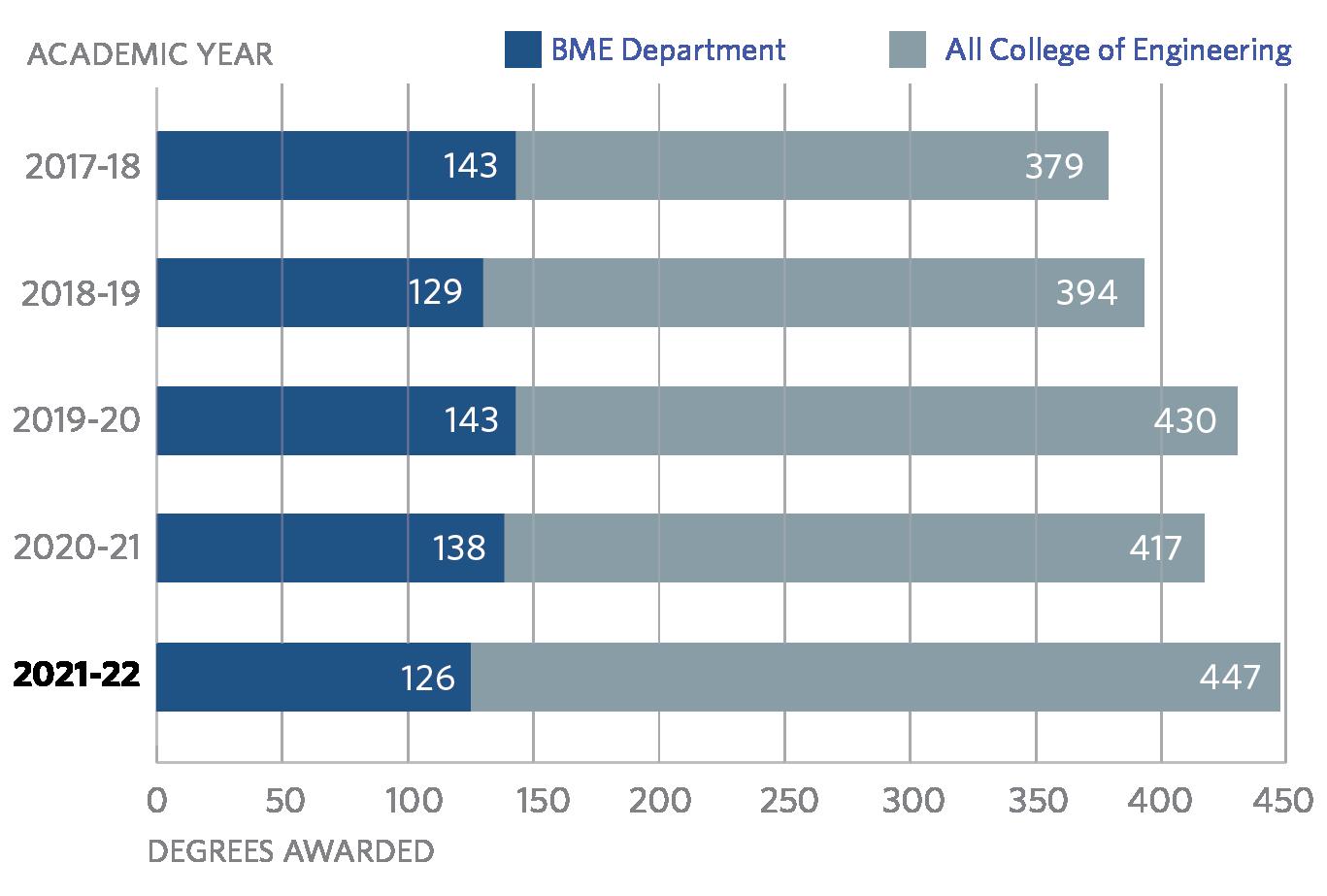
EMPLOYED

GRADUATE/PROFESSIONAL SCHOOL
The College of Engineering conducts an exit survey of all graduating seniors in late April/ early May and continues to compile data until the end of the following fall semester. The results of these interviews are shown in the chart at left for the graduating class of May 2021 and are collected approximately six months after graduation.
Transitional Jobs/Travel/Still Looking
The Modular Medical/Dental Integrated Curriculum (MMEDIC) is a competitive early selection program that leads to a BS in Engineering and an MD from the Medical School. This program is offered and administrated in collaboration with our School of Medicine and is designed to train biomedical engineers who have the MD as their ultimate degree objective. MMEDIC admits to the School of Medicine a small number of highly qualified students who have completed two years of the premedical option of the biomedical engineering curriculum. The program is not designed to accelerate the engineering or the medical training but rather to effect a better transition from undergraduate engineering study to graduate medical training. The BS in Biomedical Engineering is normally earned after 4 years of undergraduate study and the MD after an additional 4 years of study at the Boston University Medical School.
In 2022, several of the BME seniors were recognized for achievements and contributions to the Boston University community and BME profession.
Adam M. Miller Memorial Award:
Awarded by the Biomedical Engineering Department to the graduating senior who has best advanced the reputation and prestige of the department through his/her involvement in department, college, university, professional activities, or organizations, as well as through the academic and senior project programs. This year the award was presented to Jodee Frias.
Engineering Alumni Association Student Leader Award:
Presented to seniors who have made outstanding contributions to the College and University through their involvement in activities and organizations. The 5 award winners this year are Rosangel Ramos Espinoza , Jodee Frias, Meghan Howard, Maria Lazou and Ethan Strauther
Student Advisor Service Awards:
Among the ENG winners for outstanding assistance in advising this year, the following BME seniors were recognized: Robert Bing, Jeonghoon Choi, Elizabeth Hanchar, Emily Hill, Maria Lazou, Laura Mazuera, Christianna Roggeveen, Olivia Claire Rose, Blaire Smith, Ethan Strauther, Rishi Vaidya and Rohun Yarala
Undergraduate Student Service Award:
Outstanding Senior Project Award:
This year’s award winner is BME senior Olivia Claire Rose.
First Place in the Department’s 2022 Outstanding Senior Design Project Award went to Mackenzie Obenreder and Christianna Roggeveen for their project “Developing placenta-on-a-chip model to test drug transfer at the maternal-fetal interface”, under the supervision of Robert Gaibler (Draper) and Corin Williams (Draper).
Societal Impact Capstone Project Award:
Second Place in the Department’s 2022 societal Impact Capstone Project Award went to Cecile Meier-Scherling and Taylor Schissel for their project “Systems analysis and modeling to improve access to healthcare among Native American Communities in Rosebud, SD”.
The purpose of the Biomedical Engineering Society is: “To promote the increase of biomedical engineering knowledge and its utilization.” The student chapter at Boston University works towards this goal in all of its activities. The Biomedical Engineering Society provides a focus for community building among BME students with activities which strengthen their understanding of and interest in Biomedical Engineering. The Society provides students with literature, field trips, films and guest lectures, which provide them with a “resource center” concerning such vital areas as career opportunities and graduate study in Biomedical Engineering.
BMES Officers AY 2021-2022
President – Rishi Vaidya ‘22
Vice President – Simrita Dhulekar ‘22
Treasurer – Abbigale Shi ‘24
Communications Chair:– Jeonghoon Choi ‘22
Events Chair – Prinjali Kalyan ‘23
Public Relations Chair – Emily Oros ‘22

Fellows from the Distinguished Summer Research Fellowship program (DSRF) spend the summer engaged in a transformative research experience under the guidance of a faculty member. The program provides students with $10,000 per summer to cover housing, living expenses, and research expenses such as supplies, books, and related travel. Fellows must work full time in the lab of an engineering faculty member for at least 10 weeks.
The College of Engineering Supplemental Undergraduate Research Funds (SURF) program encourages faculty to involve undergraduates in their research programs during the academic year by providing matching funds for undergraduate students who are working on faculty-sponsored research. Requests for SURF funds are made by individual students when they have found positions in faculty labs.
The Undergraduate Research Opportunities Program (UROP) is a University-wide academic program which promotes participation by Boston University undergraduates in facultymentored research across all disciplines and throughout the calendar year.
DSRF Summer 2022
Armaan Vasowalla
Danielle Nadira
Do Hyun Park
Farida Korna
Gabriela Berniac
Hadassah Flagg
Johnathan Muhvich
Rashid Kolaghassi
Sarah Sheng
Taylor Ly
William Krska
Yiwen Zhang
DSRF Summer 2021
Alexandra Pineiro
Anushka Rathi
Artemis Margaronis
Brian Zhou
Emma Hartman
George Katsarakes
Isabelle Goode
Keira Donnelly
Riya Sen
SURF Summer 2021
Alexandra Van Waes
Aurelia Leona
Emily Martin
Gabriela Berniac
George Katsarakes
Jodee Frias
Joel Herbert
Julia Hua
Kate Lee
Matthew Collins
Nisrine Rahmaoui
Rana Hussein
Robert Bing
Ruiying Zhu
Soumaya Fayie
Zenia Valdiviezo
SURF Fall 2021
Alexandra Dolynuk
Alexandra Van Waes
Artemis Margaronis
Brian Zhou
Casey Goodwin
Emily Martin
Emma Hartman
Felicia Pinto
Fetsum Tadesse
George Katsarakes
Julia Hua
Juncheng Zhang
Ksenija Tasich
Layth Amra
May Aon
Nicole Leonard
Olivia Lewallen
Robert Bing
Soumaya Fayie
Zenia Valdiviezo
SURF Spring 2022
Artemis Margaronis
Aurelia Leona
Brandon Kao
Brian Zhou
Dayna Francis
Emilia Schimmelpfennig
Emily Martin
Emma Hartman
Fetsum Tadesse
George Katsarakes
Iris Vinal
Jenny Deng
Julia Hua
Juncheng Zhang
Kate Lee
Layth Amra
May Aon
Nicole Leonard
Nisrine Rahmaoui
Ruiying Zhu
Sidney Matta
Soumaya Fayie
Yuhan Li
Zenia Valdiviezo
UROP Fall 2021
Dhanvil Nanshah
Zachary Silfen
UROP Spring 2022
Artemis Margaronis
Brian Zhou
Chloe Grubb
Dea Turashvili
Emily Hill
Emre Karabay
Eren Ergene
Felicia Pinto
Gabriela Alba
Isabelle Goode
Jenny Deng
Mackenzie Obenreder
Madelyn Keller
Megan Lee
Melissa Gillis
Nicole Ostrovsky
Owen Kelly
Perry Katsarakes
Riya Sen
Taylor Ly
Zachary Silfen
UROP Summer 2021
Alec Perliss
Alexia Kaloudis
Daniel Jiang
Dogancan Kuyel
Grant Winkey
May Aon
Nicholas Mauro
Nicole Ostrovsky
Prakruti Dholiya
Rohin Bajaj
Siyuan Li
A major strong point of our undergraduate program continues to be the Senior Design Project.

The Senior Design Project Experience
Every BME senior is required to develop a project proposal with an individual faculty member, local area scientific mentor, or even a bioengineering corporate technical advisor (with a BME faculty co-supervisor). The project is then carried out with the guidance of the student’s technical advisor. This brings together elements of engineering science and engineering design. In coordination with the technical work, this course includes experience in planning, establishing priorities and formal training in technical communication including proposal, abstract, progress reports and oral and written presentations of the final work. In conjunction
40 Hz Light Enhancement Study
Noah Abrha, Anton Homenuik, Eden Gideon, Jed Lartey, Medua Nwokolo
Development of Behavioral Task to Study Motor Control in Mice
Antoine Baize, Rachel Ferrigno, Sydney Holder, Zenia Valdiviezo
Optimization of Electroencephalography Reference Layer
Allan Garcia, Stefan Lütschg
Computer Automated Neuron Identification in Functional Microscopy for C. elegans
Jun Young Choi, Laura Mazuera
with the BME Department’s Visiting Committee, we have additional lectures from our industry partners to expose the students to elements of entrepreneurship, business plans, intellectual property, marketing, and clinical regulatory issues. The project continues over the full academic year and culminates in a Senior Design Project Conference that is attended by students, faculty, and representatives from BME industry, hospitals and other academic institutions. A record of the project presentations is followed by a listing of participating companies.
A Classifier for Predicting Depth of Anesthesia Using Multimodal Cortical Recordings
Vian Ambar Agustono, Elisa Cordeiro Lopes
A Cloud-Based Framework for Organizing and Analyzing fNIRS Datasets
Christian Arthur, Jeonghoon Choi, Jiazhen Liu, Juncheng Zhang
Investigating the Bioenergetic and Biophysical Effect of Ultrasound on Neural Mitochondrial Activity
John Rim, Rockwell Tang
NinjaNIRS 2022 Backpack System
Robert Bing, Benjamin Lissner, Juan Luis Ugarte Nunez
Developing an ECG Sensor and Smartphone Application to Monitor the Cardiac Health of Remote Patients
Rachael Chiao, Brian Jung, Jaspreet Momi, Dasha Veraksa
Multispectral 2D Imaging for Oxygen Saturation in Tumor Detection
Chengxi Fan, Yining Guo, Ziwen Xie
A Non-Invasive and Massively Parallel Imaging Device for Longitudinal Monitoring of Infection Progression in Fruit Flies
Beminet Desalegn, Joshua Monroy, Pablo Saucedo, Fetsum Tadesse
Improving the Sensitivity and Automating the Basilar Membrane Probe
Andrew Gross, Jose Miguel Sevilla, Jasper Zeng
NEPHRO: Novel Evaluative Probe for Hydration Real-Time Observation
Kylee Anders, Sabrina Franco, Jodee Frias, Olivia Claire Rose
Novel Method for Strain Transfer Research on Murine Flexor Tendons at Cellular Level
Gabriela Alba, Anushka Murti, Chi Chiu Victor Wong
The Effect of Inflammatory Phase in Mechanobiological Modeling on Bone Fracture Healing
Zhuojian (Jamie) Jiang, Zakarey Sharif, Hanyu (Wendy) Wang
Rotator Cuff Tendon Surface Strain during Glenohumeral Motion: A Cadaveric Model to Assess the Effects of Mechanical Load and Joint Position
Andrew Miao, Zhongkun Xue
A System for Imaging Precision Cut Lung Slices
Keira Donnelly, Landon Kushimi, Reyn Tyler Saoit
Investigating the Density of Cetacean Middle Ear Bone
Viet Nguyen, Gautham Salgam, Danial Shafi
Miniaturized Microfluidic Device for High Throughput Production of Lipid Nanoparticles
Shirin Bakre, Genevieve Dowd, Liam Murray, Michael Sisk
Novel Nanoemulsions for Intra-ocular Delivery of Mitoprotective Drugs
Matthew Reynolds-Tejeda, Cedric Salame
Novel Design of Polymeric Nanoparticles for Targeted Drug Delivery to Glial Cells
Simrita Dhulekar, Elizabeth Hanchar, Alexandra Piñeiro, Rosangel Ramos Espinoza
Designing, Modeling, and Constructing Coherence Detection Synthetic Gene Circuits Based on Protein Oligomerization
Hannah Collins, Delaney Dow, Emily Hill, Blaire Smith
Development of Affordable Kidney Disease Diagnostic Device for Use in Low Resource Areas
Lujain Khusheim, Ashley McFarlane, Ethan Strauther, Zakiah Tcheifa
Assessing Interstitial Fibrosis and Tubular Atrophy (IFTA) Using Minimally-Invasive Elastic Scattering Spectroscopy as an Indicator of Kidney Health
Giulia Boccardo, Ji Young Chung, Meghan Howard. Emily Oros
Effect of Digital Intervention on Social and Verbal Skills in Individuals with Autism Spectrum Disorder
Matthew Collins, Nathaniel Heitmann-Bastoni, James Maher
Digital Biopsy for Glomerular Ultrastructural Measurement in TEM Images
Connor Kim, Aksel Laudon, Grace Qian, Zhaoze Wang (ECE), Jackson Ye INTERDISCIPLINARY
Designing Novel Inhibitors of SARS-CoV-2 Viral Spike Protein Function by Targeting the Substrate Binding Domain of Chaperone Protein GRP78
Jonathan R. Hutton, Maria Lazou
Classifying and Modeling of Selective and Common Actives and Inactives Against GSK3⍺ and GSK3β
Joseph Bosco, Julia Roy
Computational Model of Tensional Homeostasis of Focal Adhesions at Subcellular Level
Selina Qin, Jiaming Zhang
Quantitative, Data-Driven Systems Analysis and Modeling to Improve Access to Healthcare Among Native American Communities in Rosebud, SD
Cecile Meier-Scherling, Taylor Schissel
Designing Novel Disruptors of SARS-CoV-2 Viral Spike Protein Function by Targeting the Nucleotide Binding Site of Chaperone Protein GRP78
Ximeng Fu, Huiyi Xiong
Development of a Burst Pressure/Leak Testing System for Surgical Adhesives
Tyler Alstede, Connor Burke, Zachary Silfen, Kevin Wu
Developing Placenta-on-a-Chip Model to Test Drug Transfer at the Maternal-Fetal Interface
Mackenzie Obenreder, Christianna Roggeveen
Microfluidic Pump Optimizes Sample Transport In Integrated Bioreactor
Cassidy Balboa, Austin Cozzone, Kian Patton
Breaking Barriers in Bioprinting
Thang Le, Tiffany Lukmantara
A Long-lived Organ-on-chip Model of the Human Vasculature
Tyler Crawford, Krishna Kotak, Vien Tran
Development of a Dynamic Cushioning System with Continuous Piezoresistive Sensor Feedback for Pressure Injury Prevention and Treatment
Harin Lee, Irving Li (ME), Jessica Man (ME), Dhvanil Nanshah, Cooper Shifrin INTERDISCIPLINARY
Attachable Intraoral Camera for Dental Handpieces
Isabelle Goode, Megan Lee, Avani Sheth, Rishi Vaidya
Improving Management, Detection, and Treatment of Iron-Deficiency Anemia With Rapid, Portable, and Affordable
Next-Generation Point-of-Care Diagnostic Technology
Andrew Chan, Parth Jalihal, Sahil Mohanty, Rohun Yarala
Characterization of a Subcutaneous Bleb model
Jordan Barker, Thomas Settelmayer
Perfect Pessary
Lauren Caruso, Tiana Jazirian, Hayden Myers
Implantable Microdevice for Drug Efficacy Testing in Tumors
Samantha Downing, Rebecca Janes, Maria Merhej
Microneedle Blood Draw Device for Point-of-Care Anemia Diagnostic Test
Garrett Greaves, Safin Rouf, William Swift
3M
Accenture Life Sciences
Advanced Instruments, Inc.
Advanced Silicon Group
Ajax Biomedica
AltraBio
Altran
Applied Medical Resources
ArQule, Inc.
Atrium Medical
Avedro, Inc.
Banyan Life Sciences LLC
BD Advanced Diabetes Care
BD Medical
Beta Bionics
Beth Israel Deaconess Medical Center
Biotronik
BioTrove, Inc.
Bioventus LLC
Bitome
Boston Engineering
Boston Medical Center, Dept. of Anesthesiology
Boston Medical Center, Dept. of Clinical Engineering
Boston Medical Center, Dept. of Orthopedic Surgery
Boston Scientific
Boston University School of Management
Boston University School of Medicine
Boston University School of Medicine, Dept. of Pharmacology
Boston University School of Public Health
Boston University, Dept. of Athletic Training and Physical Therapy
Boston University, Dept. of Biochemistry
Boston University, Dept. of Biology
Boston University, Dept. of Mechanical Engineering
Boston University, Dept. of Physiological and Brain Sciences
Boston University, Dept. of Speech, Language and Hearing Sciences
Brandeis University
Brigham and Women’s Hospital
Bright Cloud International Corp
Broad Institute
Bruker Daltonics
CAE Healthcare
CBS Local
Center for Global Health and Development
Children’s Hospital Boston
CIMIT
CKD Associates
Clark & Elbing LLP
Cleveland Clinic
Codman Neuro, Johnson & Johnson
Colorado Nepal Alliance, Dept. of Veterans Affairs
Columbia University, College of Physicians and Surgeons
Comprehensive Health Management Inc.
ConforMIS, Inc.
Consult and Design
Covidien
CSA Medical
Cynosure
Davison
Davol - C.R. Bard, Inc.
Decision Resources
DEKA Research and Development Corporation
DePuy Spine, Inc.
DocBox, Inc.
Draeger Medical Systems, Inc.
Draper
Eastman Kodak Company
Eaton-Peabody Laboratory
Elm Electrical & Automation
EndoCore
Enumeral Biomedical Holdings, Inc.
Essex Orthopedics & Optima Sports Medicine
Fellers Snider et al.
Ferrotec Corporation
Fluidform
Foundation Medicine
Fractal Therapeutics
Fraunhofer USA-CMI
GE Healthcare
Gems Sensors
Genzyme Corporation
GlobalData Healthcare
Goodyear-Veyance Technologies, Inc.
Grant Street Group
Harvard Business School
Harvard Medical School
Harvard University
Harvard-MIT Division of Health Sciences and Technology
HeartWare, Inc.
Higher Order Technologies, LLC
Hologic
Hypertherm
Iandiorio Teska & Coleman
IDEXX Laboratories
Image Stream Medical
ImagiRation
Instrumentation Labs, Inc.
Integra LifeSciences
Ironwood Pharmaceuticals
iWorx Systems, Inc.
Jana Care Inc.
Janssen Pharmaceutical, Johnson & Johnson
JH Technologies
Johnson & Johnson
Lahey Hospital and Medical Center
Legionarius
Lux Research
Mankato National Instruments
Massachusetts Eye and Ear Infirmary
Massachusetts General Hospital
Massachusetts Institute of Technology
Medtronic, Inc.
METI
Minnesota State University
MIT/Koch Institute
Motility Biomedical, Inc.
nanoView Diagnostics , Inc.
Navinet
Neuroptix Corporation
New Health Sciences
Novartis Institutes for BioMedical Research
NuOrtho Surgical, Inc.
Olympus Surgical Technologies America
Optasia Medical, Inc.
Oregon Health & Science University
O’Shea Getz PC
Parexel
Perceptive Informatics PerkinElmer
Pfizer Biotherapeutics
Philips Healthcare
Philips Ultrasound
Praxis Advisors LLC
Pulmatrix, Inc.
Raytheon
Regeneron Pharmaceuticals
Respiratory Motion, Inc.
Rtangent
Sanofi
Sapient
Schepens Eye Research Institute
Schneider Electric
Shire Pharmaceuticals
Solace Therapeutics, Inc.
SoundMedicine
SQZ Biotechnologies
St. Jude Medical
Synthera Health
Takeda
Teleflex Medical
Ten15Ventures
Toxikon Corporation
Tufts University
UMASS
Universidad de Valencia
University of Texas at Austin
University of Wisconsin-Madison
US Army Institute of Environmental Medicine
USA Research Institute of Environmental Medicine
VA Boston Healthcare System
Vantage Management Group Verbal Care
Vertex Pharmaceuticals
Veterans Administration
Visus Technologies
Worcester Polytechnic Institute
Wyss Institute for Biologically Inspired
Engineering
Xcellerex
Youpling Corp.
Boston University Department of Biomedical Engineering
Annual Report 2021-2022
© 2022, Boston University
This report provides a description of the instructional and research activities of the Department of Biomedical Engineering at Boston University during the 2021-2022 academic year.
Boston University’s policies provide for equal opportunity and affirmative action in employment and admission to all programs in the university.
For more information or to download this report as a PDF, please visit our website at: bu.edu/bme